 |
PO
Box 9021, Wilmington, DE 19809, USA
E-mail: font@focusonnature.com
Phone: Toll-free in USA 1-888-721-3555
or 302/529-1876 |
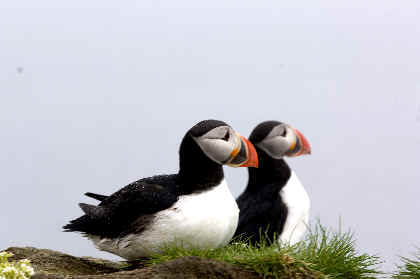 Birds
of EUROPE
Birds
of EUROPE
from Grouse to
Puffin
Noting those found during
Focus On Nature Tours
with an (*)
1992 thru 2015
including
the Canary Islands off Africa,
and Turkey, in Asia Minor
Part 1 of a Europe Bird List compiled by Armas Hill,
with some photos
Photo at upper right: ATLANTIC
PUFFINS,
as during FONT tours in the late spring in Iceland
451 birds have cumulatively
been seen during FONT European tours. A few of the birds in the following list
are distinctive subspecies.
There have been 58 FONT birding and nature tours in Europe, with 25 in Spain, and
20 in Iceland.
Link: Part
#2 of this list of Birds
in Europe: Sandgrouse to Buntings
Codes (in this list):
In the list that
follows, relating to sightings during FONT tours, the country & the months
are noted.
BU:
Bulgaria
CI:
Canary Islands (Spain)
HU: Hungary
IC: Iceland
PO: Poland
RM: Romania (inc. "Transylvania")
SL: Slovakia
SP:
Spain,
including nearby Andorra:
AN,
France:
FR,
Gibraltar:
GR,
Morocco:
MR,
& Portugal:
PG
SW:
Sweden
TU: Turkey
The following 2 sets
of designations by Birdlife International:
(t): a globally threatened or
rare species
(t1): critical
(t2): endangered
(t3): vulnerable
(nt): a near-threatened species globally
(Ee): endangered in Europe
(Ev): vulnerable in Europe
(Er): rare in Europe
(Ed): has recently declined in Europe
(El): localized in Europe
(i): an introduced species
(Vme): vagrant from the Middle East
(Vna): vagrant from North America
(Vsib): vagrant from Siberia
(ph): species with a photo in the FONT website
Other Links:
Upcoming FONT Birding & Nature Tours in Europe FONT Past Tour Highlights
A List of European Mammals
(with
some photos)
Directory of Photos in this Website
Links to Bird-Lists for particular European countries:
Bulgaria
the Canary Islands
Iceland: a complete bird-list with some interesting text
Spain
Sweden

Bird-List:
- Rock Ptarmigan (*) (ph) ______
IC:may,jun,oct
Lagopus muta islandorum
(one of 24 subspecies worldwide)
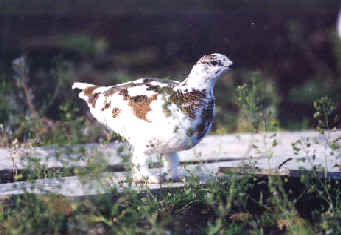
Above & Below: Rock Ptarmigans photographed during FONT tours in Iceland
Upper & middle photos of males; lower photo a female
(upper photo by Alan Brady; middle & lower photos by Gabi Hauser)
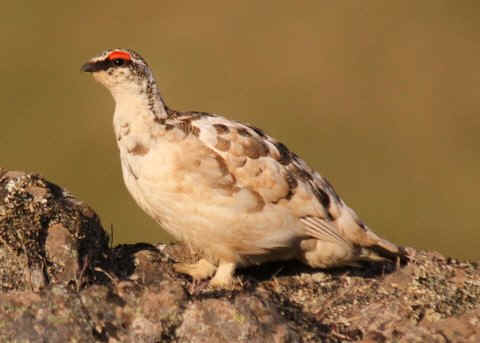
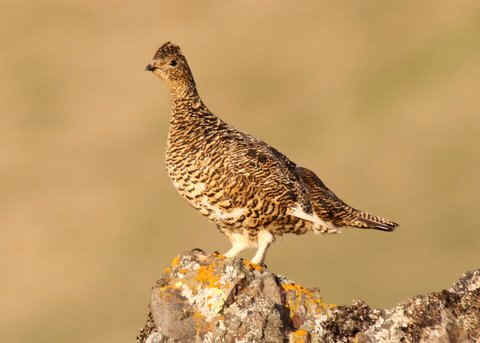
- Hazel Grouse (*) ______ PO:apr
SL:may
Bonasa bonasia styriacus
- "Northern" Black Grouse (Ev) (*) ______
PO:apr,may
Tetrao t. tetrix
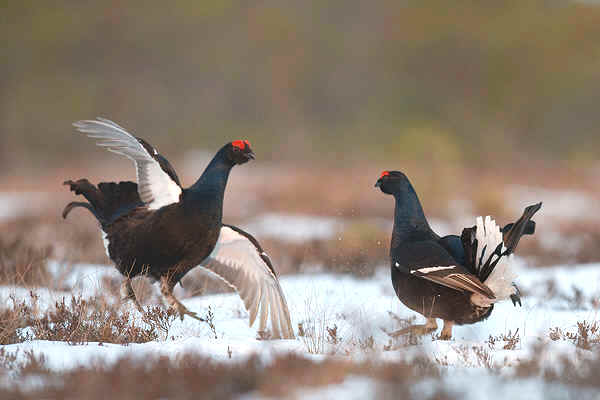
Black Grouse
- Western Capercaille (*) ______
RM:may SW
Tetrao u. urogallus (SW)
Tetrao urogallus rudolfi (RM)
- Chukar Partridge (Ev) (*) ______
BU:may TU:aug
Alectoris chukar kleini
- Red-legged Partridge (Ev) (*) ______
SP:jan,apr,jun,sep
Alectorus rufa
Alectorus rufa hispanica ______ subspecies in the
northern & western Iberian Peninsula
Alectorus rufa intercedens ______ subspecies in
the eastern & southern Iberian Peninsula & the Balearic Islands
Alectorus rufa rufa ______ subspecies in
France, northwest Italy, Corsica
- Rock Partridge (nt) ______
Alectorus graeca
Alectorus gracea gracea
______ Eastern Rock Partridge subspecies in eastern Bosnia,
Greece, Bulgaria
Alectorus gracea saxatilis
______ Central Rock Partridge subspecies from the southern
Alps to western Bosnia
Alectorus gracea whitakeri
______ Sicilian Rock Partridge subspecies endemic to
Sicily
- Barbary Partridge (Ee) (*) ______ CI:jun
GR
Alectoris barbara koenigi
- Grey Partridge (Ev) (*) ______
BU:may
PO:apr,may SP SW:sep
Perdix p. perdix (except SP)
Perdix p. hispaniensis (SP)
Perdix perdix has also been called Hungarian Partridge.
- Common Quail (Ev) (*) ______
BU:may HU:may PO:may SP TU:aug
Coturnix c. coturnix
- Common Pheasant (i) (*) ______ BU:may
HU:may
PO:apr,may RM:may SL:may
SP:jan SW:sep
Phasinus colchicus
Included here in Phasinus colchicus
is the "Ring-necked Pheasant", Phasinus
c. torquatus, from China, with a white neck-ring, and Phasinus
c. colchicus from Russia, lacking the neck-ring.
- Mute Swan (*) (ph) ______ BU:may
HU:may
PO:apr,may
SP:jun SW:sep
Cygnus olor
(monotypic)
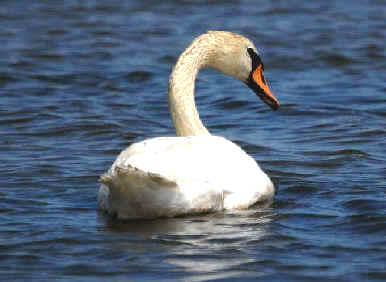
Mute Swans are common during FONT tours in Sweden,
where they are native residents.
- Whooper Swan (*) (ph) ______ BU:may
IC:may,jun,sep,oct PO:apr,may SW
Cygnus cygnus (now monotypic, with islandicus merged)
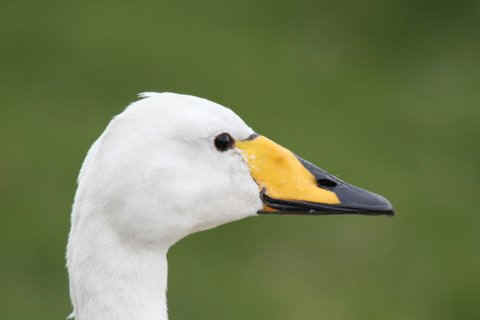
Above & below: Whooper Swans photographed
during the FONT Tour in Iceland in June 2012
(photos by Gabi Hauser)
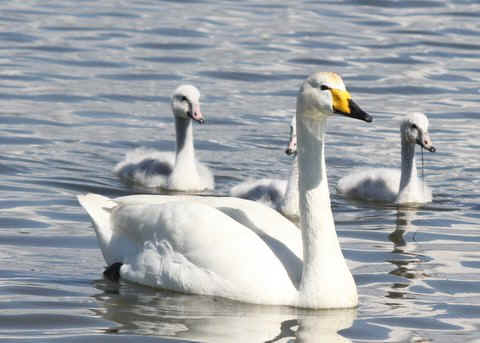
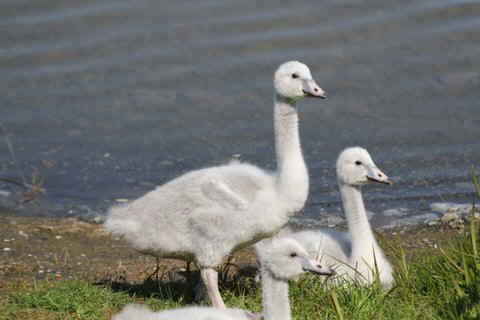
- "Bewick's" Tundra Swan (*)
______ SW
Cygnus columbianus bewickii
The "Bewick's" Tundra Swan of Eurasia is conspecific
with the "Whistling" Tundra Swan of North America, Cygnus
c. columbianus.
- Greylag Goose (*) (ph) ______ BU:may
HU:may IC:may,jun,sep,oct PO:apr,may SP:apr,jun,dec SW:sep
Anser a. anser
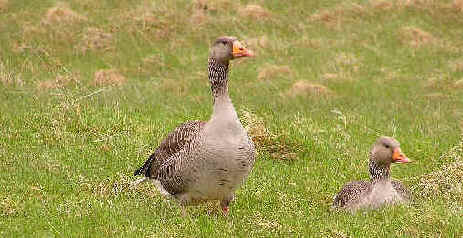
Greylag Geese photographed during a FONT tour in Iceland
(photo by Cheryl Pearce)
- Pink-footed Goose (*) (ph) ______ IC:jun,sep,oct
Anser brachyhynchus
(monotypic)
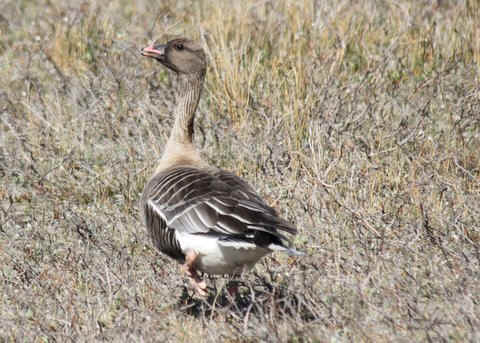
Above & below: Pink-footed Geese photographed during the June 2012
FONT tour in Iceland. Above: an adult; below: a gosling.
(photos by Gabi Hauser)
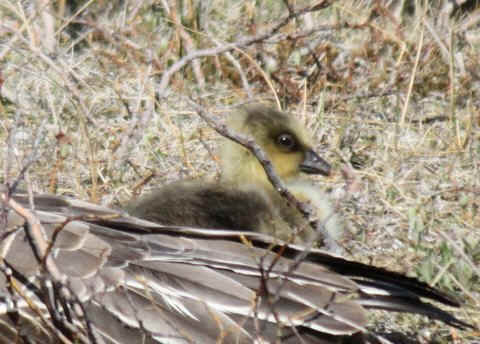
- Bean Goose (*) ______ PO:apr
SW
(includes "Taiga" Bean Goose, Anser f. fabalis, and "Tundra" Bean
Goose, Anser fabalis rossicus)
- Greater White-fronted
Goose (*) ______ BU:may
HU IC:oct PO:apr SW:sep
Anser a. albifrons
- Lesser White-fronted Goose (t3) (Ev) (*) ______
BU:may HU
Anser erythropus
(monotypic)
- Brent Goose (Ev) (*) (ph) ______
IC:sep,oct SW:sep
Branta bernicla
Branta b. bernicla: Dark-bellied Brent Goose (in
Sweden)
Branta benicla hrota: Pale-bellied Brent
Goose (in Iceland)
In North America, Branta bernicla
is called Brant.
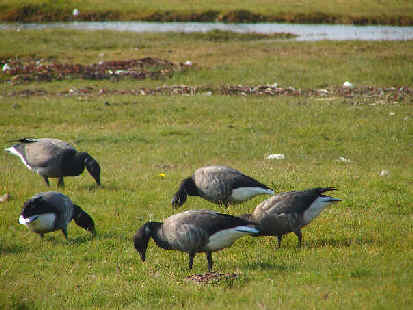
Brant Geese on Oland Island
during the FONT tour on Oland Island
in September 2007
(photo by James
Scheib)
- Barnacle Goose (El) (*) (ph) ______ IC:jun,sep,oct
(rare in IC in jun)
SW:sep
Branta leucopsis (monotypic)
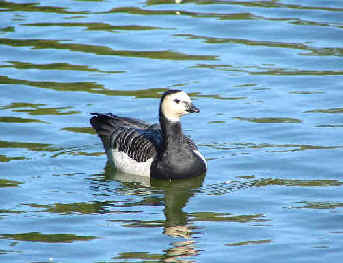
Just one of the many Barnacle Geese seen
during the FONT Sweden Tour in September 2007
(photo by James Scheib)
Red-breasted Goose (t3) (El) (*) (ph) ______
BU:may SW
Branta ruficollis
(monotypic)
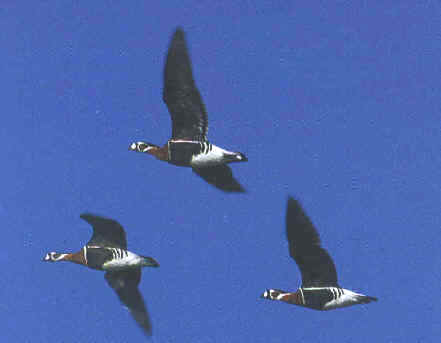
Red-breasted Geese
Canada Goose (i) (*) ______ SW:sep
Branta canadensis
Snow Goose (Vna) (*) (ph) ______
IC:sep(rare)
Anser caerulescens atlanticus
Egyptian Goose (i) (*) ______ SW:sep
Alopochen aegyptiaca (monotypic, and the single member of its
genus)
Common Shelduck (*) (ph) ______
BU:may HU:may IC:jun PO:may SP:jun,sep,oct,dec SW:sep TU:aug
Tadorna tadorna
(monotypic)
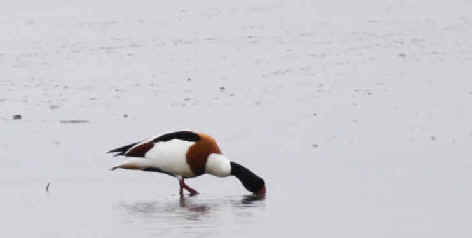
A Common Shelduck during the 20th FONT Iceland Tour in June 2015.
This was the first Common Shelduck ever seen during a FONT tour in Iceland.
(photo by Marie Gardner)
Ruddy Shelduck (Ev) (*) ______ BU:may
CI:jun TU:aug
Tadorna ferruginea (monotypic)
Mallard (*) (ph) ______ BU:may
HU:may IC:may,jun,sep,oct PO:apr,may RM:may SL:may SP:jan,apr,jun,jul,sep,oct,dec
SW:sep TU:aug
Anas p. platyrhynchos
American Black Duck (Vna) (*) (ph)
______ IC;sep,oct(rare)
Anas rubripes
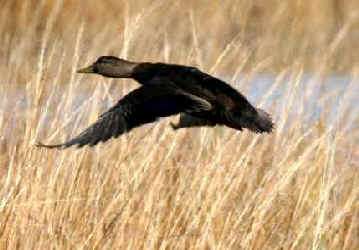
The American Black Duck is one of the vagrants
that has been seen in Iceland during a FONT tour.
Gadwall (Ev) (*) (ph) ______ BU:may
HU:may IC:jun,oct PO:apr,may SP:apr,jun,sep,oct,dec SW:sep
Anas strepera
(now monotypic)
Eurasian Teal (*) (ph) ______
BU:may
HU
IC:may,jun,oct PO:apr,may SP:jun,sep,dec SW:sep TU:aug
Anas c. crecca
The Eurasian Teal has been considered conspecific with the
Green-winged Teal of North America, Anas
carolinensis.
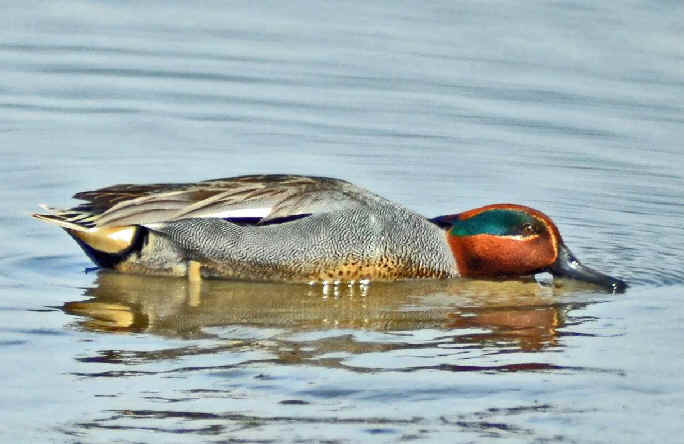
Eurasian Teal
(photo by Howard Eskin)
Green-winged Teal (Vna) (*) (ph) ______ IC:jun(rare)
Anas carolinensis (monotypic)
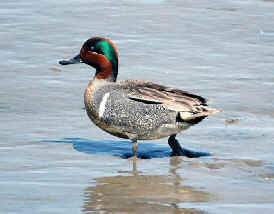
A male Green-winged Teal was a vagrant from North
America
that we saw during our Iceland tour in June 2006
(photo by Howard Eskin)
Garganey (Ev) (*) ______
BU:may HU:may
IC:jun(rare) PO:apr,may RM:may
SP TU:aug
Anas querquedula
(monotypic)
Northern Pintail (Ev) (*) (ph) ______
BU:may HU:may IC:jun
PO:apr,may
SP:dec SW:sep
Anas acuta
(monotypic)
Eurasian Wigeon (*) (ph) ______
BU:may HU IC:may,jun,sep,oct PO:apr,may SP:dec SW:sep
Anas penelope
(monotypic)
American Wigeon (Vna) (*) (ph) ______
IC:oct(rare)
Anas americana
Northern Shoveler (*) (ph) ______ BU:may
HU:may PO:apr,may SP;sep,dec SW:sep TU:aug
Anas clypeata
(monotypic)
Marbled Duck (t3) (Ee) (*) ______ SP
Marmaronetta angustirostris
(monotypic, and the single member of its
genus)
Red-crested Pochard (Ed) (*) ______
BU:may SP:apr,jun,oct
Netta rufina
(monotypic)
Common Pochard (*) (ph) ______
BU:may HU:may
PO:apr,may
SP:apr,jun,dec SW:sep TU:aug
Aythya ferina
(monotypic)
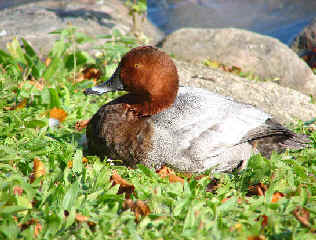
A Common Pochard photographed during a FONT tour in Sweden
(photo by James Scheib)
Tufted Duck (*) (ph) ______ BU:may
HU:may
IC:may,jun,sep,oct PO:apr,may SP:dec SW:sep
Aythya fuligula
(monotypic)
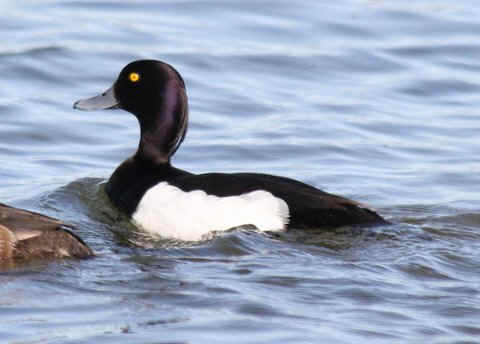
Above & below: Tufted Ducks
Above a male, below a female
(upper photo by Gabi Hauser during the FONT Iceland Tour in June 2012.
lower photo by Alan Mitchnick during the FONT Iceland Tour in Sep/Oct
2013)
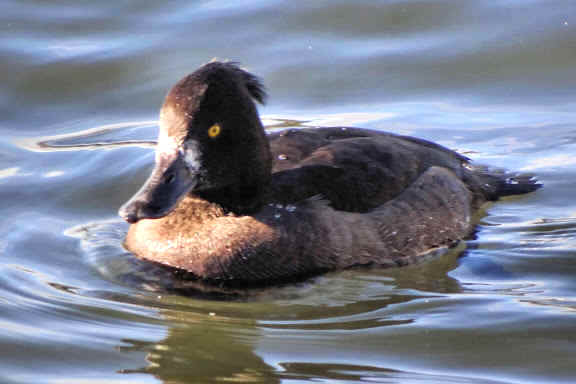
Greater Scaup (El) (*) (ph) ______
BU:may HU:may IC:jun,oct RM:may SW:sep
Aythya m. marila
In Europe, Aythya marila
is simply called Scaup, as the Lesser Scaup is only in North
America.
Ferruginous Duck (t3) (Ev) (*) ______
BU:may HU:may
SP:jun,dec TU:aug
Aythya nyroca
(monotypic)
Another name for Aythya nyroca
has been White-eyed Pochard.
Common Goldeneye (*) ______
BU:may HU:may IC:jun(rare) PO:apr,may SW:sep
Bucephala c. clangula
Barrow's Goldeneye (Ee) (*) (ph) ______
IC:jun,sep,oct
Bucephala islandica (monotypic)
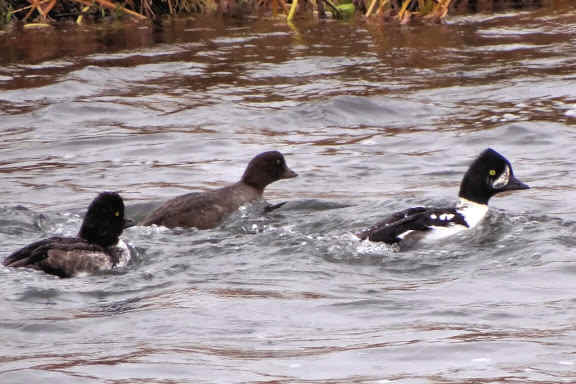
Barrow's Goldeneyes during the FONT tour in Iceland in Sep/Oct 2013.
Iceland is the only place where the Barrow's Goldeneye occurs in Europe.
(photo by Alan Mitchnick)
Common Eider (*) (ph) ______ IC:may,jun,sep,oct
SW:sep
Somateria m. mollissima
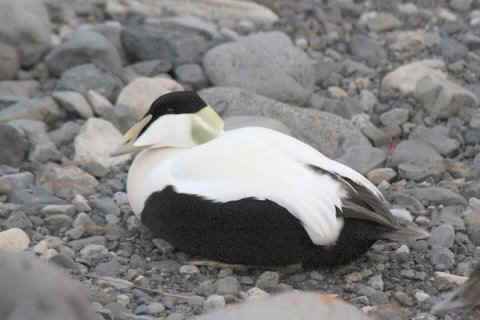
Above & below: Common Eiders
Above a male; below a female.
(upper photo by Gabi Hauser during the FONT Iceland tour
in June 2012)
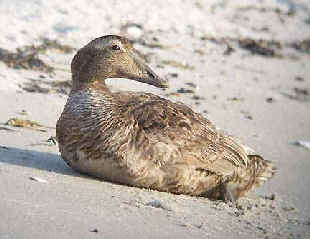
Below: an adult male Common Eider showing
the pinkish coloration it has in breeding plumage
(photo by Alan Mitchnick)
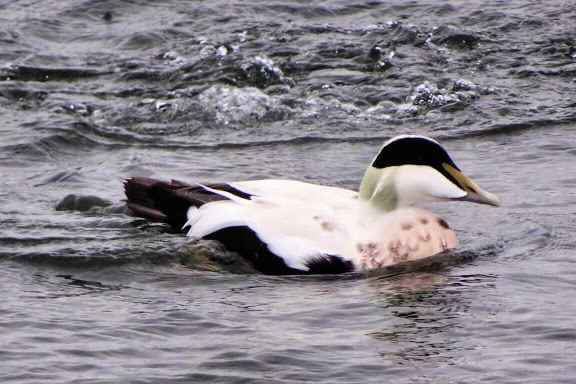
King Eider (*) (ph) ______ IC:jun(rare)
Somateria spectabilis (monotypic)
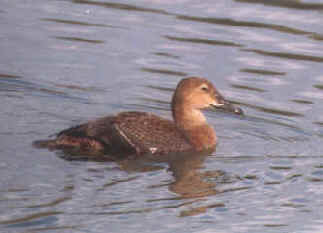
King Eiders, above: a female; below: an adult male in breeding plumage,
as seen during FONT tours in Iceland
(upper photo by Alan Brady; lower photo by Howard Eskin)
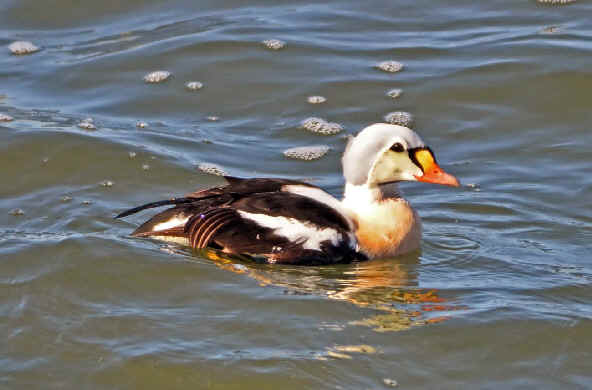
Steller's Eider (*) (ph) ______ SW:sep
Polysticta stelleri (monotypic, and the single member of its
genus)
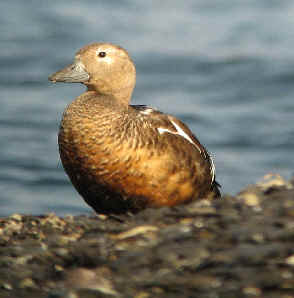
Above: an immature male Steller's Eider, photographed on Oland Island
during the FONT Sweden Tour in September 2006
(photo by Claude Bloch)
Below: a group of adult Steller's Eiders, both males and females, in
Estonia.
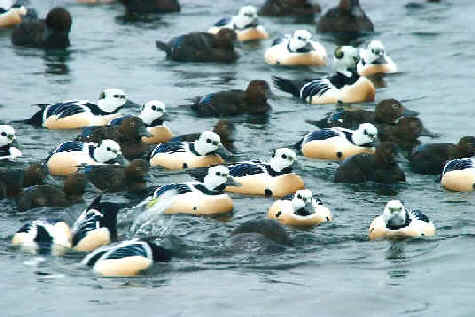
Long-tailed Duck (t3) (*) (ph) ______ IC:may,jun,sep,oct
Clangula hyemalis (monotypic, and the single member of its genus)
Clangula hyemalis was called Oldsquaw
in North America.
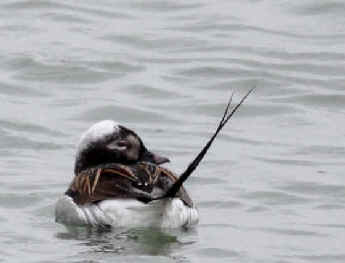
Above & below: Long-tailed Ducks in summer and winter plumages
Above, in breeding plumage, photographed during the FONT tour
in Iceland in June 2015
(upper photo by Marie Gardner; lower photo by Kim Steininger)
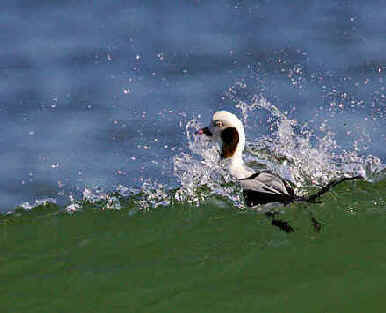
Harlequin Duck (Ev) (*) (ph) ______
IC:may,jun,oct
Histrionicus histrionicus
(now monotypic, with pacificus merged)
(the single member of its genus)
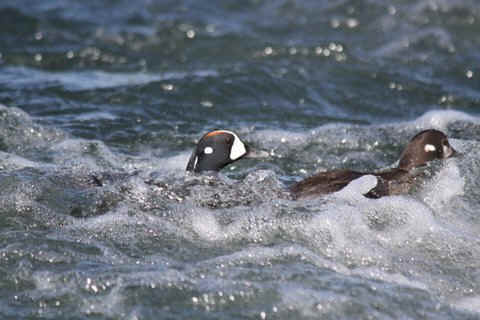
Above: a pair of Harlequin Ducks in the rushing water of a river in
Iceland
Below: a female Harlequin Duck with young
The only place where this species normally occurs in Europe is Iceland.
(upper photo by Gabi Hauser; lower photo by Howard Eskin)
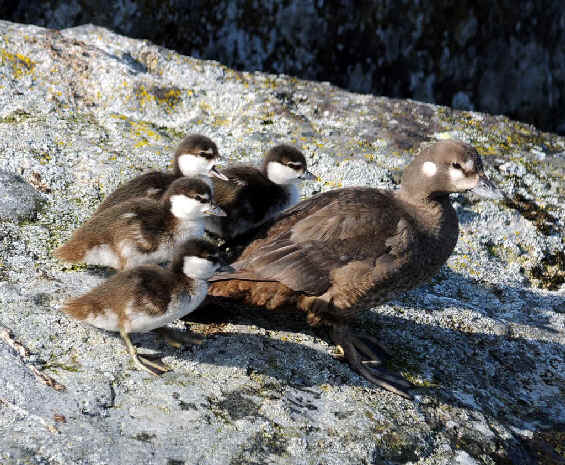
Common Scoter (*) (ph) ______ IC:may,jun,sep,oct
SP
Melanitta nigra
The Common Scoter was conspecific with what is now the
Black Scoter in North America, Melanitta
americana.
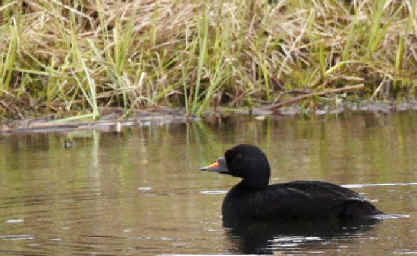
An adult male Common Scoter during the FONT Iceland Tour in June 2015.
Where this photograph was taken, the species breeds.
(photo by Marie Gardner)
Velvet Scoter (t2) (El) (*) ______ SW
Melanitta fusca
The Velvet Scoter was conspecific with the White-winged
Scoter of North America, Melanitta deglandi.
White-winged Scoter (Vna) (*)
______ IC:jun(rare)
Melanitta
deglandi
Surf Scoter (Vna) (*)
______ IC:jun(rare)
Melanitta
perspicillata
Goosander (*) (ph) ______ IC:may,jun,sep,oct
PO:apr,may
SW
Mergus m. merganser
Mergus merganser
is called Common Merganser in North America.
Red-breasted Merganser (*) (ph) ______ IC:may,jun,sep,oct
SP:dec SW:sep
Mergus serrator
(monotypic)
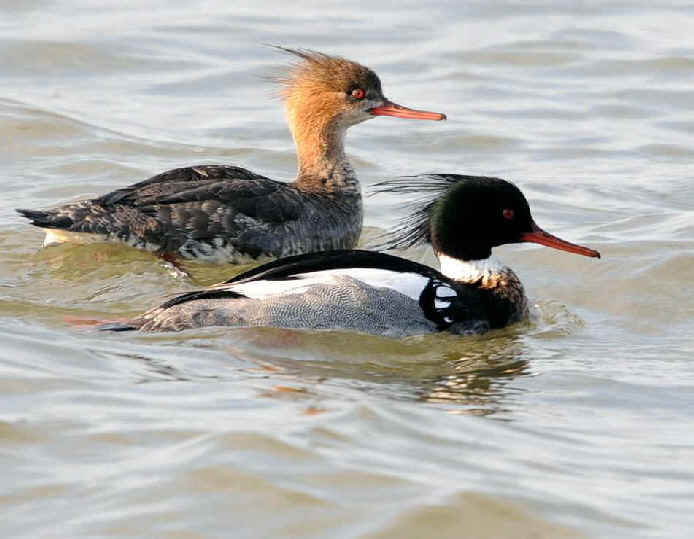
A pair of Red-breasted Mergansers
(photo by Howard Eskin)
White-headed Duck (t3) (Ee) (*) ______ SP:apr,jun,dec TU:aug
Oxyura leucocophala
(monotypic)
Great Northern Diver (*) (ph) ______ IC:may,jun,sep,oct
Gavia immer
(now monotypic)
Gavia immer is called Common
Loon in North America.
White-billed Diver (*) ______ IC:jun(rare)
Gavia adamsii (monotypic)
Gavia adamsii is
called Yellow-billed Loon in North America
Red-throated Diver (Ev) (*) (ph) ______
IC:may,jun,sep,oct
SW:sep
Gavia stellata (monotypic)
Gavia stellata is called
Red-throated Loon in North America.
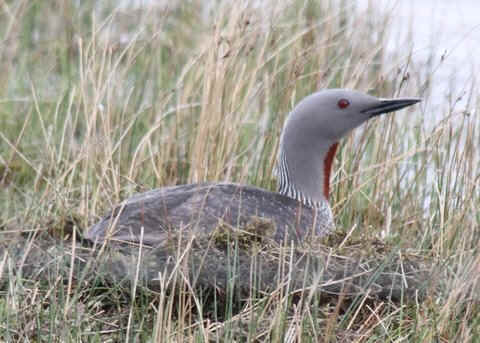
A Red-throated Loon photographed during the FONT Iceland Tour in June
2012
(photo by Gabi Hauser)
Black-throated Diver (Ev) (*) ______
PO:apr,may SP SW:sep
Gavia a. arctica
Gavia arctica
is called Arctic Loon in North America.
Northern Fulmar (*) (ph) ______
IC:may,jun,sep,oct SW
Fulmarus glacialis auduboni
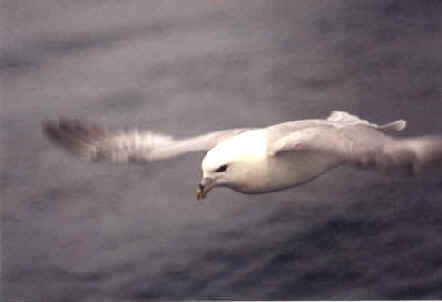
Northern Fulmar
Manx Shearwater (El) (*) ______
IC:jun
Puffinus puffinus (now monotypic)
Balearic Shearwater (*) ______
SP:jan
Puffinus mauretanicus (monotypic)
The Balearic Shearwater was part of the Manx Shearwater
(above).
Yelkouan
Shearwater (t3) (*) ______ TU:aug
Puffinus yelkouan (monotypic)
Another name for Puffinus yelkouan is
Levantine Shearwater. It was part of the Manx Shearwater.
Cory's Shearwater (*) (ph) ______ CI:jun,jul
SP:jan
Calonectris d. diomedea (SP) ("Scoploi's
Shearwater")
(Ev)
Calonectris diomedea borealis (CI)
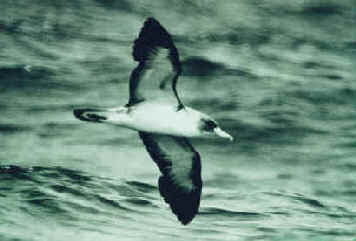
Cory's Shearwater
(photo by Alan Brady)
Barolo Shearwater (Ev) (*) ______
CI:jul
Puffinus baroli (monotypic)
Another name for Puffinus baroli
is Macaronesian Shearwwater. It was included in what was a more
wide-ranging Little Shearwater.
Now, the Barolo Shearwater, of the Azores and Canary Islands, is
said to be more closely related to the Audubon's Shearwater.
There was a race of the Audubon's Shearwater in the eastern
Atlantic, breeding on Cape Verde Island, that is now called the Boyd's
Shearwater, Puffinus boydi.
With new taxonomy, the Little Shearwater now has a range restricted
to the Indian and southwestern Pacific Oceans, near Australia and New
Zealand.
Bulwer's Petrel (Ev) (*) (ph) ______ CI:jun,jul
Bulweria b. bulwerii
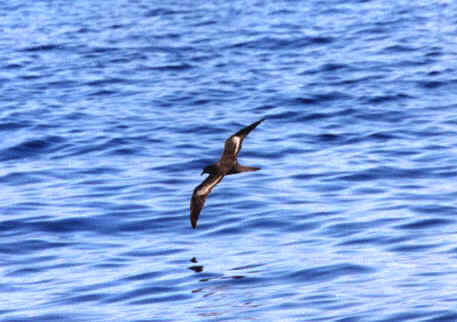
The Bulwer's Petrel has been seen from ferries during all FONT tours in the
Canary Islands
Great Crested Grebe (*) ______
BU:may
HU:may IC:may(rare) PO:apr,may
SL:may SP:apr,jun,sep,oct,dec
SW:sep TU:aug
Podiceps c. cristatus
Red-necked Grebe (*) (ph) ______
BU:may HU:may PO:apr,may SW
Podiceps g. grisegena
Black-necked Grebe (*) (ph) ______
BU:may HU:may PO:apr,may SP:apr,jun,dec TU:aug
Podiceps n. nigricollis
Podiceps nigricollis
is called Eared Grebe in North America.
Slavonian Grebe (*) (ph) ______ IC:jun,oct
SW:sep
Podiceps a. auritus
Podiceps auritus
is called Horned Grebe in North America.
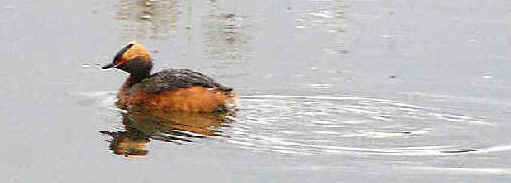
Above: A Slavonian, or Horned Grebe, in its breeding attire,
photographed during a FONT tour in Iceland
(photo by Cheryl Pearce)
Below: A Slavonian, or Horned Grebe, in non-breeding plumage, as seen during our tours
in September/October.
(photo by Kim Steininger)
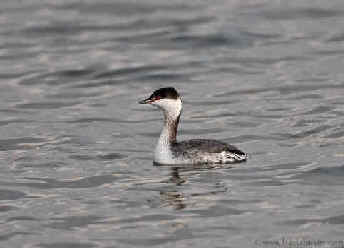
Little Grebe (*)
(ph) ______
BU:may HU:may PO:apr,may SP:apr,jun,jul,sep,oct,dec
SW:sep TU:aug
Tachybaptus r. ruficollis
Another name for Tachybaptus ruficollis
is "Dabchick".
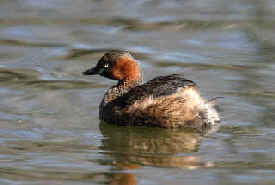
Little Grebe
Greater Flamingo (El) (*) (ph) ______
SP:apr,jun,jul,oct,dec
TU:aug
Phoenicopterus roseus (monotypic)
The American Flamingo, now Phoenicopterus
ruber, was conspecific with the Greater Flamingo, now
only in the Old World.
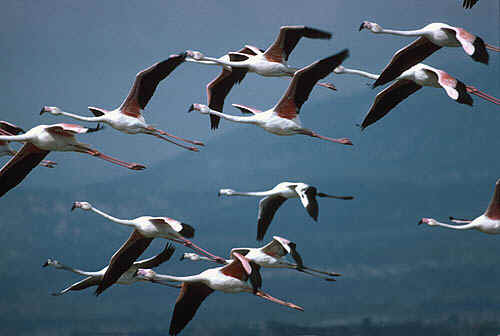
Greater Flamingos
(photo by Jens Bruun)
White Stork (Ev) (*) (ph) ______
BU:may HU:may
PO:apr,may RM:may SL:may
SP:jan,apr,jun,sep,oct,dec TU:aug
Ciconia c. ciconia
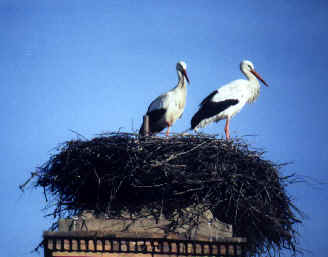
White Storks in Spain photographed during a FONT tour
Black Stork (Er) (*) (ph) ______
BU:may HU:may PO:apr,may SP:apr,jun,sep TU:aug
Ciconia nigra (monotypic)
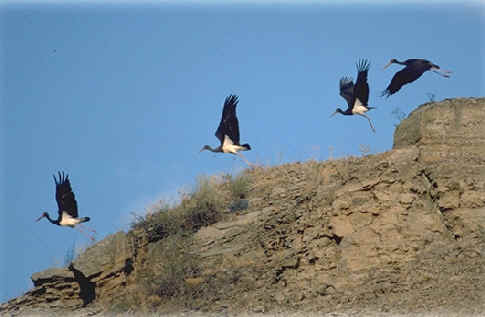
Black Storks in Bulgaria
Glossy Ibis (Ed) (*) (ph) ______
BU:may HU:may
SP:jun,dec TU:aug
Plegadis falcinellus (now monotypic)
Eurasian Spoonbill (Ee) (*) (ph) ______
BU:may
CI:jul HU:may SP:apr,jun,dec TU:aug
Platalea l. leucorodia
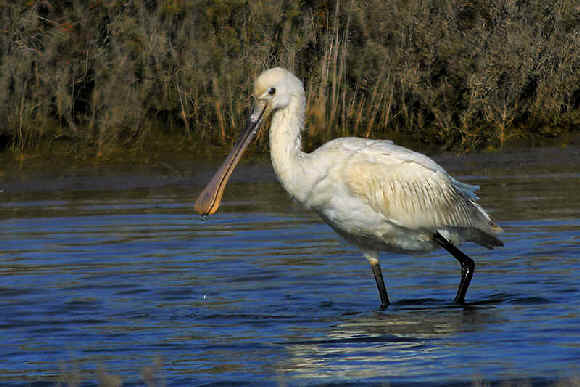
Eurasian Spoonbill
Grey Heron (*) (ph) ______ BU:may
CI:jul HU:may IC:jun,sep,oct(rare) PG:sep PO:apr,may RM:may
SP:jan,apr,jun,jul,sep,oct,dec SW:sep TU:aug
Ardea c. cinerea
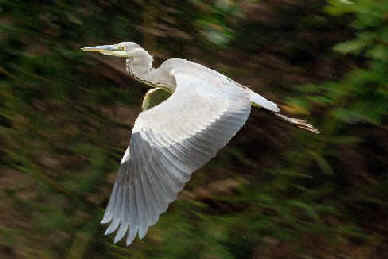
Grey Heron
(photo by Howard Eskin)
Purple Heron (Ev) (*) ______
BU:may HU:may
SP:jun,jul,oct TU:aug
Ardea p. purpurea
Great Egret (*) (ph) ______ BU:may
HU:may PO:may SP:jun,oct SW TU:aug
Ardea alba (was Casmerodius
alba)
Little Egret (*) (ph) ______
BU:may HU:may PG:sep SP:jan,apr,jun,jul,sep,oct,dec TU:aug
Egretta g. garzetta
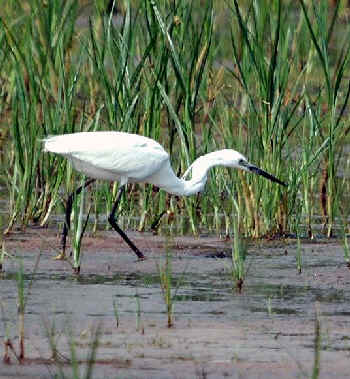
Little Egret
(photo by Howard Eskin)
Western Cattle Egret (*) (ph) ______ CI:jun
PG:sep SP:jan,apr,jun,jul,sep,oct,dec TU:aug
Bubulcus ibis
The Western Cattle Egret is in parts of Europe,
Africa, and the Americas.
The Eastern Cattle Egret, Bubulcus coromandus, is in eastern
Asia.
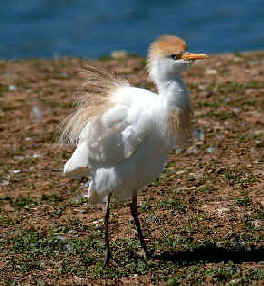
Western Cattle Egret
(photo by Howard Eskin)
Squacco Heron (Ev) (*) ______ BU:may HU:may SP:apr,jun,jul TU:aug
Ardeola ralloides (monotypic)
Black-crowned Night-Heron (Ed) (*) ______ BU:may HU:may SP:jun,jul,sep,oct
TU:aug
Nycticorax n. nycticorax
Little Bittern (Ev) (*) ______ BU:may
HU:may SP:apr,jun,jul TU:aug
Ixobrychus m. minutus
Eurasian Bittern (Ev) (*) ______
BU:may HU:may PO:apr,may TU:aug
Botaurus s. stellaris
Great White Pelican (Er) (*) (ph) ______
BU:may TU:aug
Pelecanus onocrotalus (monotypic)
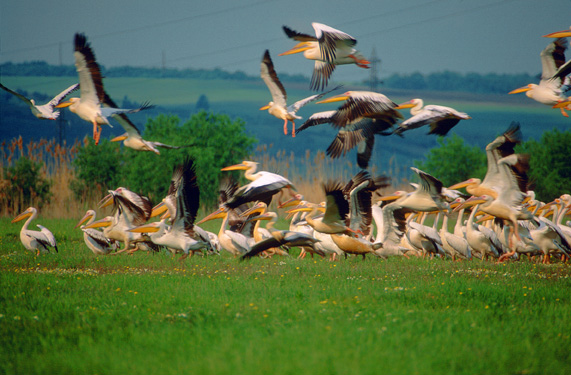
Great White Pelicans in eastern Europe
Dalmatian Pelican (nt) (Ev) (*) ______
BU:may TU:aug
Pelecanus crispus (monotypic)
Northern Gannet (El) (*) (ph) ______
CI:jun IC:jun,sep,oct GR:jun SP:jan,jun,dec
Morus bassena (formerly Sula bassena)
(monotypic)
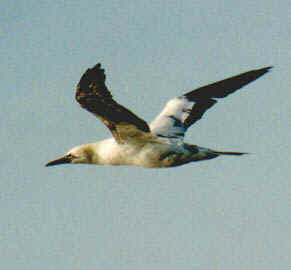
A Northern Gannet photographed during a FONT tour
(photo by Andy Smith)
European Shag (*) (ph) ______ BU:may
IC:may,jun,sep GR SP
Phalacrocorax a. aristotelis
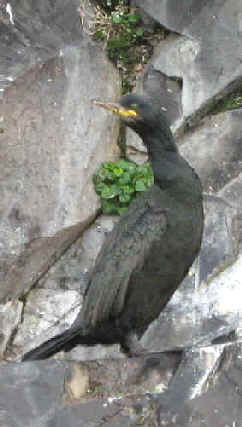
Above & below: European Shags photographed during FONT tours in Iceland.
In the upper photo, note the green eye.
(lower photo by Gabi Hauser during our tour in June 2012)
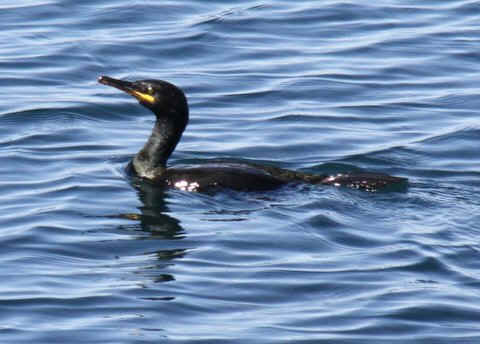
Great Cormorant (*) ______ BU:may
HU:may IC:may,jun,sep,oct PO:apr,may SP:jul,sep,oct,dec SW:sep
TU:aug
Phalacrocorax c. carbo
Pygmy Cormorant (nt) (Ev) (*)
(ph) ______
BU:may HU:may TU:aug
Phalacrocorax pygmeus (monotypic)
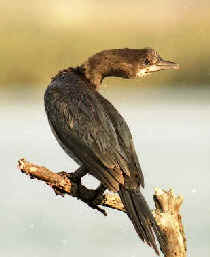
Pygmy Cormorant
Gyrfalcon (Ev) (*) (ph) ______ IC:may,jun(seen
at nest site), oct(as many as 3 during 1 tour)
Falco rusticolus (monotypic, but with a variation in color)
The "Iceland Falcon" is a pale grey morph of the Gyrfalcon.
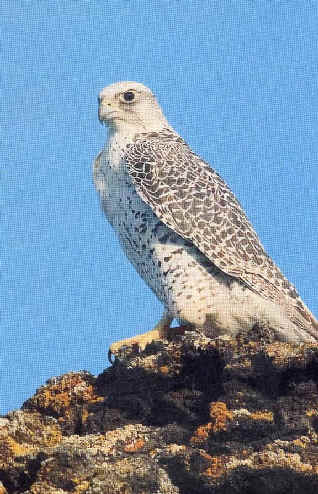
A light-morph Gyrfalcon in Iceland
Saker Falcon (t2) (Ee) (*) ______
BU:may HU:may TU:aug
Falco cherrug
Lanner Falcon (Ee) (*) ______
TU:aug
Falco biarmicus
Peregrine Falcon (Er) (*) (ph) ______
BU:may
FR:jun HU:may RM:may SP:jan,apr,jun,sep,dec SW:sep TU:aug
Falco p. peregrinus
Barbary Falcon (Er) (*) ______ CI:jun,jul
Falco p. pelegrinoides
Northern Hobby (*) ______
BU:may FR HU:may PO:apr,may
SL:may SP:sep SW:sep
TU:aug
Falco s. subbuteo
Red-footed Falcon (Ev) (*) ______
BU:may HU:may PO:may RM:may TU:aug
Falco vespertinus
The Red-footed Falcon is closely related to, and was
considered conspecific with the Amur Falcon of Asia,
Falcon amurensis.
Eleonora's Falcon (Er) (*) (ph) ______ CI:jun
TU:aug
Falco eleonorae
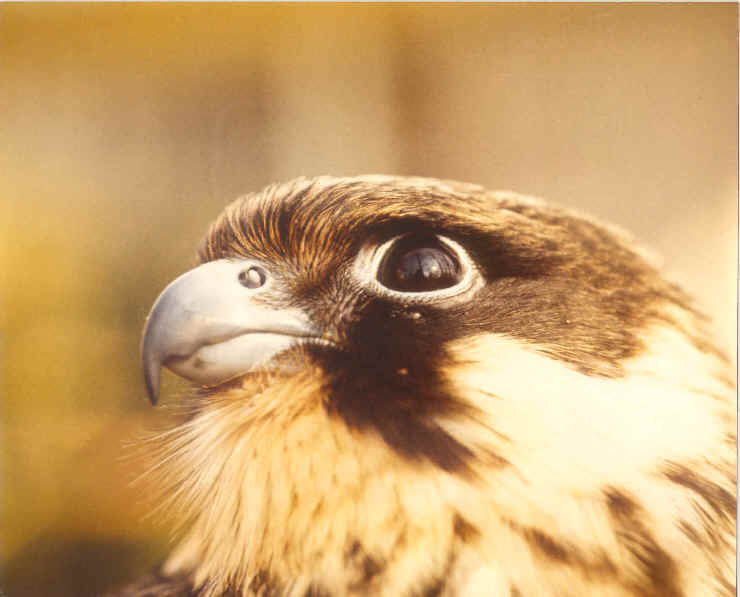
A close-up of a young Eleonora's Falcon
Lesser Kestrel (t3) (Ev) (*) ______ BU:may
SP:apr,jun,sep TU:aug
Falco naumanni
Merlin (*) (ph) ______ IC:jun,sep,oct
SP:sep SW:sep
Falco columbarius subaesalon (subspecies
in Iceland)
Falco columbarius aesalon (subspecies in Sweden)
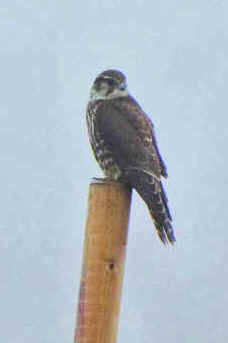
A Merlin photographed during the FONT tour in Iceland
in September/October 2013
(photo by Alan Mitchnick)
Eurasian Kestrel (Ed) (*) ______ AN:jun BU:may CI:jun,jul(both
endemic subspecies) FR:jun HU:may IC:sep,oct(rare)
PG:sep PO:apr,may RM:may SL:may SP:jan,apr,jun,jul,sep,oct,dec
SW:sep TU:aug
Falco t. tinnunculus (except CI)
Falco tinnunculus canariensis (subspecies
endemic in the western Canary Islands)
Falco tinnunculus dacotiae (subspecies endemic in the
eastern Canary Islands)
Osprey (Er) (*) (ph) ______ BU:may
PO:apr,may SP:apr,jun,dec SW TU:aug
Pandion h. haliaetus
(the single member of its genus)
Red Kite (*) (ph) ______ BU:may
SP:apr,jun,sep,dec SW:sep
Milvus m. milvus (the other subspecies is in the Cape Verde islands)
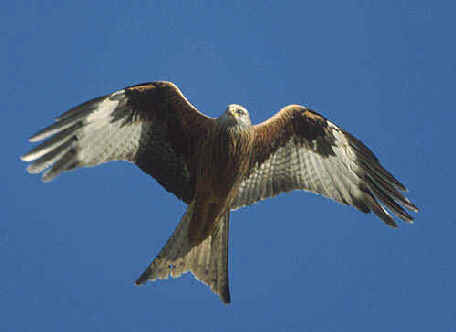
Red Kite
(photo by Jens Bruun)
Black Kite (Ev) (*) ______
BU:may PO:apr,may SL:may SP:apr,jun,dec SW
TU:aug
Milvus m. migrans
Black-winged Kite (Ev) (*) ______
SP:apr,jun
Elanus c. caeruleus
Egyptian Vulture (Ee) (*) ______
BU:may CI:jun,jul FR SP:apr,jun,dec
TU:aug
Neophron p. percnopterus (the single member of its genus)
Bearded Vulture (nt) (Ee) (*) ______
AN:jun BU:may SP TU:aug
Gypaetus b. barbatus (the single member of its genus)
Another name for Gypaetus barbatus
is Lammergeier.
Cinereous Vulture (nt) (Ev) (*) ______
BU:may SP:apr,jun.sep TU:aug
Aegypius monachus
(monotypic, and the single member of its genus)
Other names for Aegypius monachus
have been Eurasian Black Vulture and Monk Vulture.
Griffon Vulture (Er) (*) ______
AN:jun BU:may FR:jun SP:jan,apr,jun,sep,oct
Gyps f. fulvus
Levant Sparrowhawk (Er) (*) ______
BU:may TU:aug
Accipiter brevipes (monotypic)
Eurasian Sparrowhawk (*) (ph) ______
BU:may CI:jun,jul PO:apr,may RM:may SP:jul,sep,dec
SW:sep TU:aug
Accipiter n. nisus
(except
CI)
Accipiter n. granti (CI)
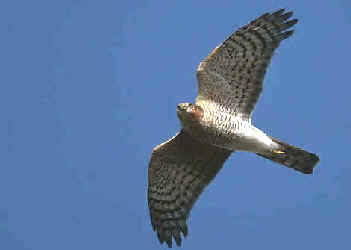
Eurasian Sparrowhawk
(photo by Jens Bruun)
Northern Goshawk (*) ______
BU:may HU:may
PO:may SL:may SP SW:sep
Accipiter g. gentilis
Rough-legged Buzzard (*) (ph) ______ SW
Buteo l. lagopus
Buteo lagopus
is called Rough-legged Hawk in North America.
In Europe, it has no dark morph.
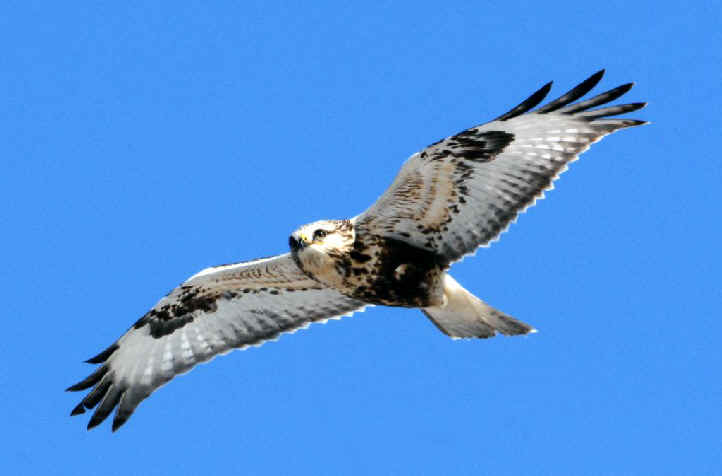
A light-morph Rough-legged Buzzard
(photo by Howard Eskin)
Common Buzzard (*) (ph) ______
AN:jun BU:may CI:jun,jul FR HU:may PG:sep
PO:apr,may
RM:may SL:may SP:jan,apr,jun,sep,oct,dec SW:sep TU:aug
Buteo b. buteo
(except CI)
Buteo b. insularum (CI)
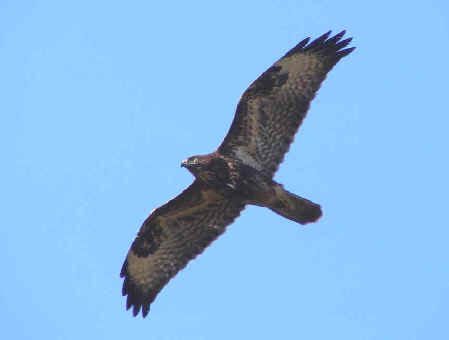
A dark-morph Common Buzzard photographed in flight over Falsterbo
during the FONT Sweden Tour in September 2007
(photo by James Scheib)
Long-legged Buzzard (Ee) (*) ______
BU:may HU:may TU:aug
Buteo r. rufinus
European Honey Buzzard (*) ______
BU:may FR HU:may PO:apr,may RM:may
SP SW:sep TU:aug
Pernis apivorus (monotypic)
White-tailed Eagle (nt) (Er) (*)
(ph) ______
BU:may HU IC:may,jun,sep,oct
PO:apr,may SW:sep
Haliaeetus a. albicilla (the other subspecies is in Greenland)
Haliaeetus albicilla
has been called the White-tailed Fish-eagle.
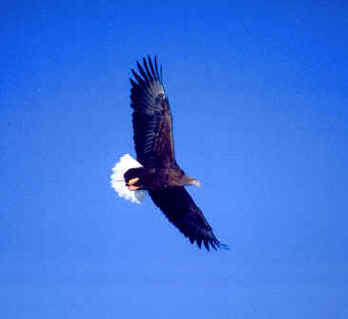
Above & below: adult White-tailed Eagles
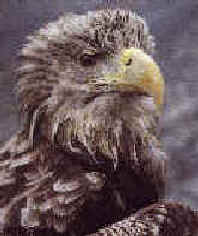
Short-toed Snake Eagle (Er) (*) ______ AN:jun BU:may
HU:may SP:apr,jun TU:aug
Circaetus gallicus
(monotypic)
Bonelli's Eagle (Ee) (*) ______
BU:may FR:jun SP
Hieraaetus f. fasciatus
Booted Eagle (Er) (*) ______ BU:may
PG:sep SP:jan,apr,jun,dec (dimorphic, pale & dark)
Hieraaetus pennatus
Golden Eagle (Er) (*) ______
AN:jun BU:may FR:jun HU PO:apr,may RM SP:apr,jun,sep SW
TU:aug
Aquila c. chrysaetos (except
SP)
Aquila chrysaetos homeyeri (SP)
Asian Imperial Eagle (t3) (Ee) (*) (ph) ______
BU:may HU:may SL:may TU:aug
Aquila heliaca
(monotypic)
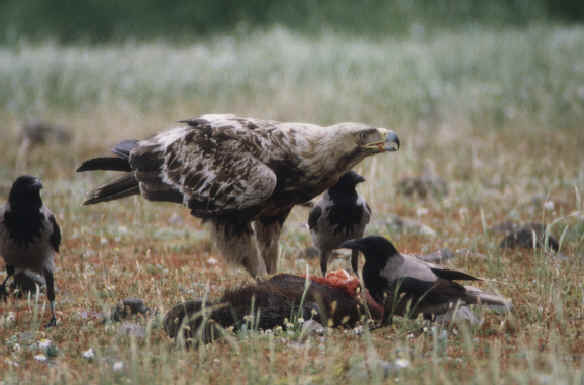
The Asian Imperial Eagle in eastern Europe
Spanish Imperial Eagle (t3) (Ee) (*) ______
SP:jan,jun,sep
Aquila adalberti (monotypic)
Another name for Aquila adalberti has
been Adalbert's Eagle.
Greater Spotted Eagle (t3) (Ee) (*) ______
PO:apr,may SW
Aquila clanga
(monotypic)
Lesser Spotted Eagle (Er) (*) ______
BU:may PO:apr,may RM:may SL:may SW:sep
Aquila p. pomarina
(the other subspecies is in India and Burma)
Steppe Eagle (Ev) (*) ______ HU:may
TU:aug
Aquila nipalensis orientalis
The Steppe Eagle has been said to conspecific with the
Tawny Eagle, Aquila rapax.
Western Marsh Harrier (*) ______
BU:may HU:may
PO:apr,may SL:may
SP:jan,apr,jun,oct,dec SW:sep TU:aug
Circus aeruginosus
The Western Marsh Harrier was conspecific with the Eastern
Marsh Harrier of Asia, Circus spilonotus.
When so, it was called the Northern Marsh Harrier.
Hen Harrier (Ev) (*) ______
BU:may PO:apr,may SP:jan,apr SW:sep
TU:aug
Circus cyaneus
The Hen Harrier has been considered conspecific with the Northern
Harrier of North America.
Pallid Harrier (Ee) (*) ______ BU:may
PO:apr TU:aug
Circus macrourus
(monotypic)
Montagu's Harrier (*) ______
BU:may FR:jun HU:may PO:apr,may SP:apr,jun TU:aug
Circus pygargus
(monotypic)
Water Rail (*) ______ BU:may
HU PO:apr
SP:apr,jun TU:aug
Rallus aquaticus
Rallus aquaticus
was conspecific with what is now the Eastern Water Rail of
eastern Asia, Rallus indicus.
Baillon's Crake (Er) (*) ______ BU:may
SP:apr,jun
Porzana pusilla intermedia
Spotted Crake (*) (ph) ______ BU:may
HU:may PO:apr SW:oct
Porzana porzana (monotypic)
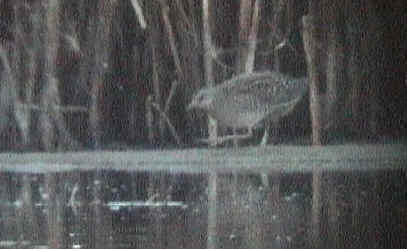
A Spotted Crake, seen during
FONT's Sweden tour in October 2000
(photo by Tommy Holmgren on a video through a telescope.)
At the time, this was the first Spotted Crake in that part of Sweden since
1985!
Little Crake (*) ______ BU:may
HU:may PO:apr,may TU:aug
Porzana parva (monotypic)
Corncrake (t3) (*) (ph) ______
BU:may HU:may PO:apr,may RM:may
Crex crex (monotypic)
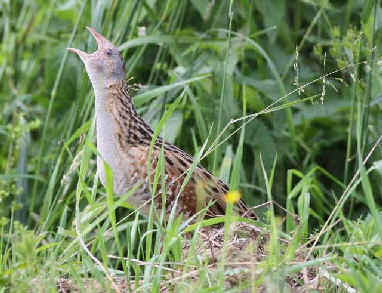
Corncrake
(photo by Przemyslaw Kunysz)
Common Moorhen (*) ______
BU:may HU:may PO:apr,may SP:jan,apr,jun,jul,sep,oct,dec
SW TU:aug
Gallinula c. chloropus
Purple Swamphen (Er) (*) ______ SP:apr,jun,oct,dec
Porphyrio p. porphyrio
Eurasian Coot (*) ______ BU:may
CI:jul HU:may
IC:jun(rare) PO:apr,may SP:jan,apr,jun,jul,sep,oct,dec
SW:sep TU:aug
Fulica a. atra
Red-knobbed Coot (*) ______ SP:apr
Fulica cristata (monotypic)
Another name for Fulica cristata
is Crested Coot.
Common Crane (Ev) (*) (ph) ______
HU:may PO:apr,may SP:jan SW:sep
Grus g. grus
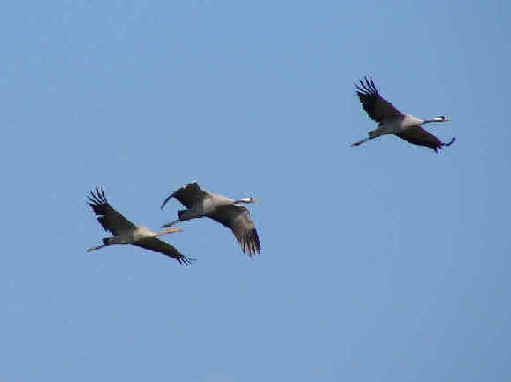
A family of Common Cranes in
flight at Oland Island,
with a single young bird following the adults
(photo by James Scheib during
the Sept 2007 FONT Sweden tour)
Great Bustard (t3) (Ed) (*) (ph) ______
HU:may SP:apr,jun,sep
Otis t. tarda
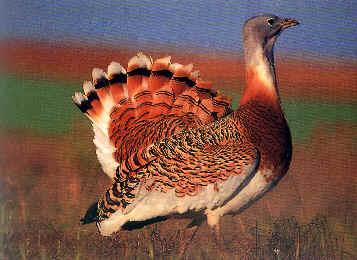
Great Bustard
Little Bustard (nt) (Ev) (*) ______
SP:apr,jun,sep
Tetrax tetrax (monotypic, and the single member of its genus)
Houbara Bustard (Ee) (*) ______
CI:jun,jul
Chlamydotis undulata fuerteventurae
Eurasian Stone Curlew (Ev) (*) ______
BU:may CI:jun,jul HU SP:apr,jun
Burhinus o. oedicnemus
Eurasian Oystercatcher (*) (ph) ______ BU:may
HU:may
IC:may,jun,sep,oct RM:may SP:jun,jul,dec SW
Haematopus o. ostralegus (in western Europe)
Haematopus ostralegus longipes (in eastern Europe)
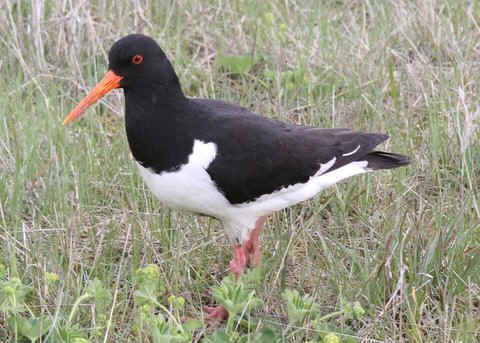
Above & below: Eurasian Oystercatchers
during the FONT Iceland Tour in June 2012
(photos by Gabi Hauser)
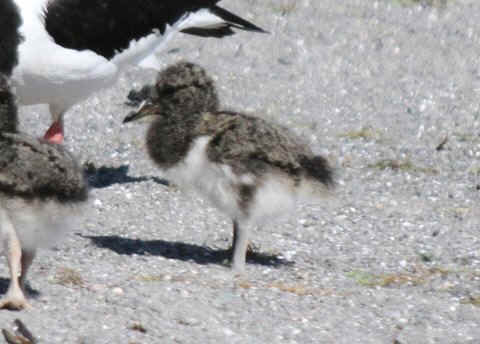
Pied Avocet (El) (*) (ph) ______ BU:may
HU:may SP:jun,jul,oct SW:sep TU:aug
Recurvirostra avosetta (monotypic)
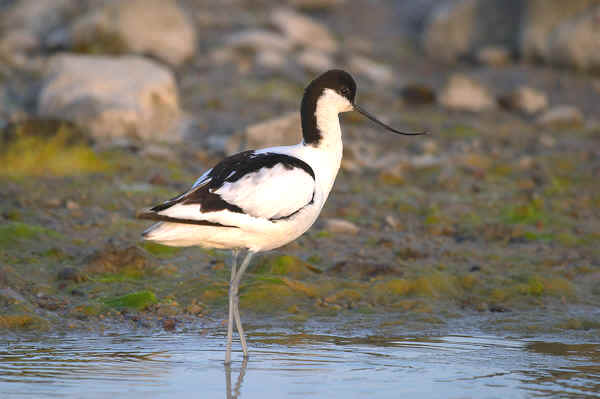
Pied Avocet
Black-winged Stilt (ph) ______ BU:may
HU:may SP:jan,apr,jun,jul,oct,dec TU:aug
Himantopus h. himantopus
Eurasian Dotterel (*) (ph) ______
SP:oct SW
Charadrius morinellus (formerly Eudromias morinellus)
(monotypic)
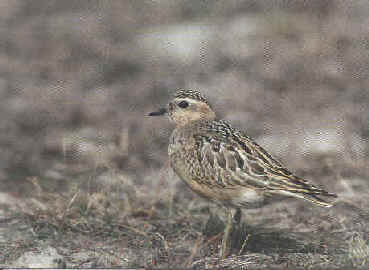
Eurasian Dotterel
(photo by Janos Olah, Jr.)
Grey Plover (*) (ph) ______ BU:may
HU:may
IC:jun,sep(rare) PO:may SP:jun,oct,dec
SW:sep TU:aug
Pluvialis s. squatarola
The Grey Plover is called Black-bellied Plover in the
Americas.
European Golden Plover (*) (ph) ______
IC:may,jun,sep,oct SP:jan SW:sep
Pluvialis a. apricaria (except IC)
Pluvialis apricaria altifrons (IC)
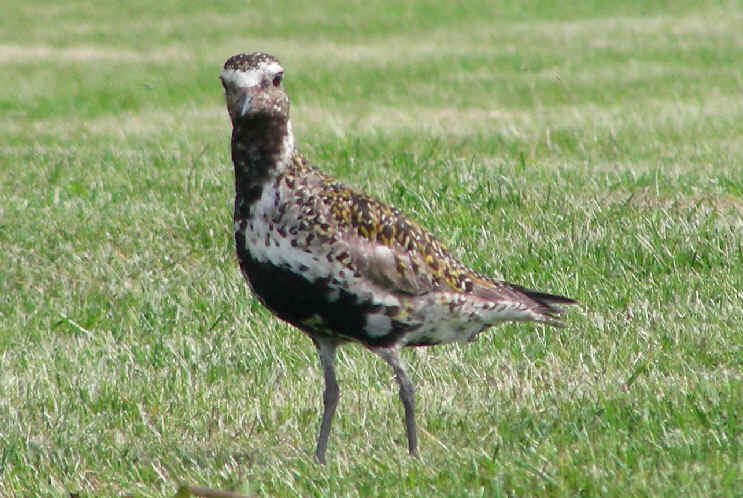
A European Golden Plover photographed during the FONT
tour in Iceland in June 2009
(photo by Gerin Hood)
Little Ringed Plover (*) ______
BU:may CI:jul HU:may PO:apr,may SP:apr,jun,sep,oct
TU:aug
Charadrius dubius curonicus
Common Ringed Plover (*) (ph) ______
BU:may HU:may
IC:may,jun,oct(rare in oct)
PO:apr,may
SP:apr,jun(rare),dec SW TU:aug
Charadrius h. hiaticula
Charadrius hiaticula tundrae
(these 2 subspecies overlap. with C.h.tundrae most easterly)
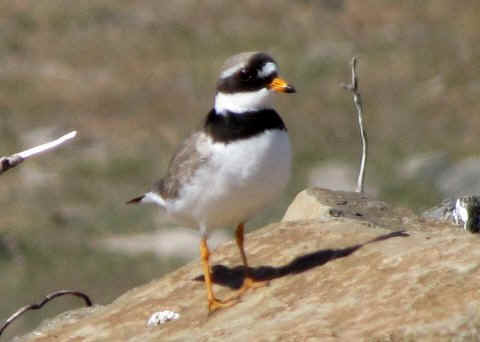
A Common Ringed Plover photographed during
the FONT tour in Iceland in June 2012
(photo by Gabi Hauser)
Kentish Plover (Ed) (*)
______ BU:may CI:jun SP:apr,jun,jul,oct,dec
TU:aug
Charadrius a. alexandrinus
The Kentish Plover was conspecific with the Snowy Plover of
the Americas, Charadrius nivosus.
Northern Lapwing (*) (ph) ______
BU:may HU:may PO:apr,may SL:may SP:jan,apr,jun,sep,oct,dec
SW:sep TU:aug
Vanellus vanellus
(monotypic)
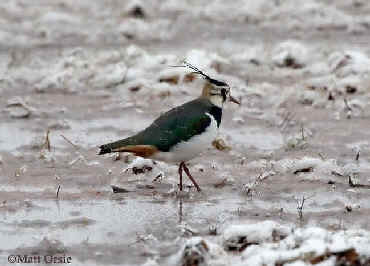
Northern Lapwing
(photo by Matt Orsie)
White-tailed Lapwing (Vme) (*) (ph) ______
BU:may HU:may (was called White-tailed
Plover)
Vanellus leucura (formerly Chettusia leucura) (monotypic)
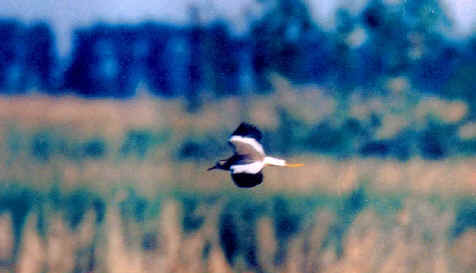
A White-tailed Lapwing photographed during a FONT tour in Hungary in 2001
(photo by Alan Brady)
Spur-winged Lapwing (Ee) (*) ______
TU
Vanellus spinosus (formerly Hoplopterus spinosus) (monotypic)
Vanellus spinosus
has been called Spur-winged Plover.
Ruddy Turnstone (*) (ph) ______ BU:may
IC:may,jun,sep,oct PO:may SP:jan,oct,dec
Arenaria i. interpres
Purple Sandpiper (*) (ph) ______
IC:may,jun,sep,oct
Calidris maritima littoralis (endemic subspecies in IC)
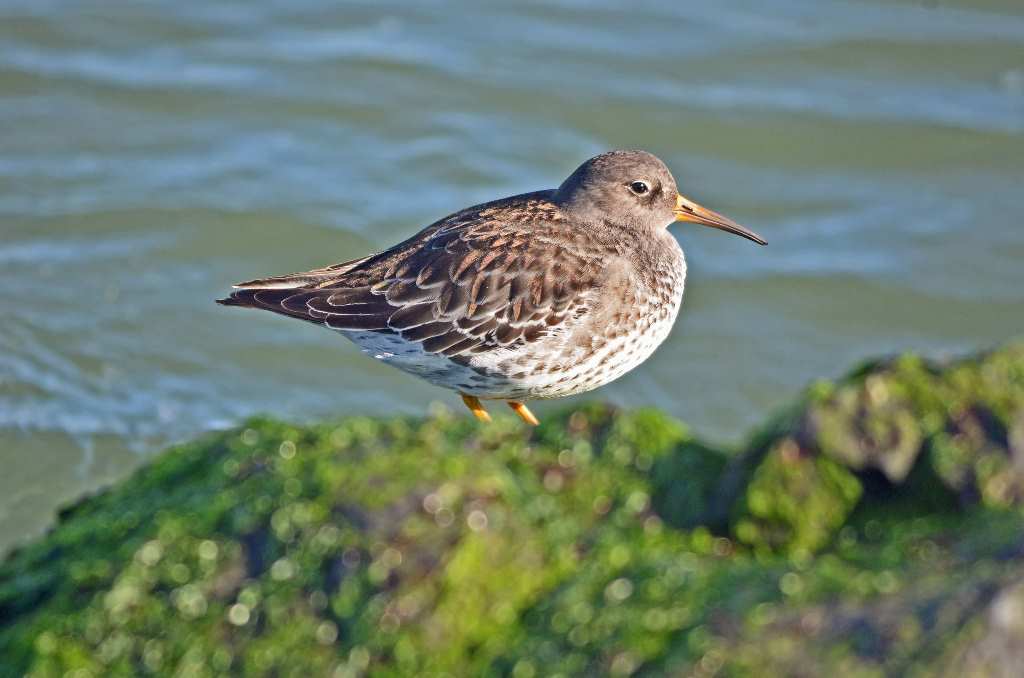
Purple Sandpiper
(photo by Howard
Eskin)
Dunlin (Ev) (*) (ph) ______ BU:may
HU:may
IC:may,jun,sep,oct PO:may SP:apr,oct,dec SW:sep
Calidris a. alpina
Calidris alpina schrinzii
(the 2 subspecies overlap in migration)
Curlew Sandpiper (*) (ph) ______
BU:may HU:may PO:apr SP:apr,oct SW TU:aug
Calidris ferruginea (monotypic)
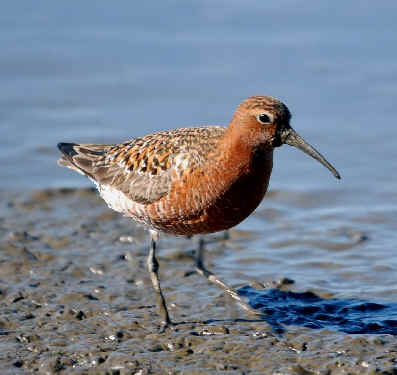
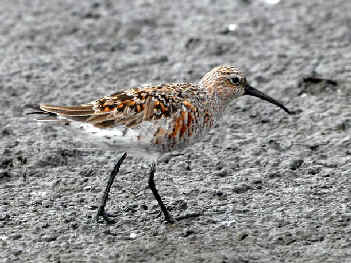
2 photos of Curlew Sandpipers.
The upper photo of a male in breeding plumage.
(photos by Howard Eskin)
Red Knot (El) (*) (ph) ______ IC:jun
SP:jun SW:sep
Calidris c. canutus
Sanderling (*) (ph) ______ BU:may
HU:may
IC:may,jun,sep SP:jan,dec TU:aug
Calidris a. alba
White-rumped Sandpiper (Vna) (*) (ph)
______
IC:oct(rare)
Calidris fuscicollis (monotypic)
Semipalmated Sandpiper (Vna) (*) (ph)
______
HU:may
Calidris pusilla (monotypic)
Little Stint (*) ______ BU:may
HU:may IC:sep PO:may SP:oct SW TU:aug
Calidris minuta (monotypic)
Temminck's Stint (*) ______
BU:may HU:may PO:apr,may SP:jun
Calidris temminckii (monotypic)
Pectoral Sandpiper (Vna) (*) (ph) ______
SW:sep TU:aug
Calidris melanotos (monotypic)
Wood Sandpiper (Ed) (*) (ph) ______
BU:may HU:may PO:apr,may SP:jun,sep,oct,dec TU:aug
Tringa glareola (monotypic)
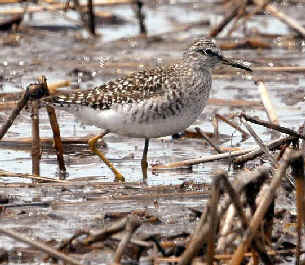
Wood Sandpiper
(photo by Howard Eskin)
Common Greenshank (*) ______
BU:may HU:may PO:apr SP:apr,jun,sep,oct,dec
SW:sep TU:aug
Tringa nebularia (monotypic)
Common Redshank (Ed) (*) (ph) ______
BU:may HU:may
IC:may,jun,sep,oct PO:apr,may SP:apr,jun,jul,oct,dec SW:sep TU:aug
Tringa t. totanus (except IC)
Tringa totanus robusta (IC)
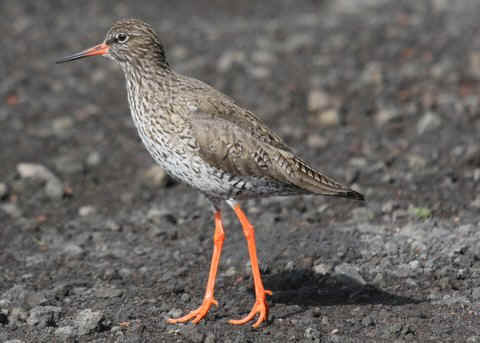
Above: a Common Redshank photographed during
the FONT Iceland Tour in June 2012
Below: a baby Redshank during that same tour
(photos by Gabi Huser)
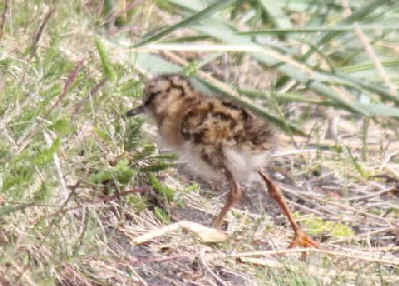
Spotted Redshank (*) ______
BU:may HU:may PO:apr SP:oct,dec SW:sep TU:aug
Tringa erythropus (monotypic)
Marsh Sandpiper (*) ______ BU:may
HU:may TU:aug
Tringa stagnatilis (monotypic)
Green Sandpiper (*) ______
BU:may PO:apr,may SP:jan,apr,jun,sep,oct,dec TU:aug
Tringa ochropus (monotypic)
Common Sandpiper (*) ______
BU:may HU:may PO:apr,may RM:may SP:jan,apr,sep,oct,dec
SW:sep TU:aug
Actitis hypoleucos (monotypic)
Ruff / Reeve (*) (ph) ______ BU:may
HU:may PO:apr,may RM:may SP:oct SW:sep
Philomachus pugnax (monotypic, and the single member of its genus)
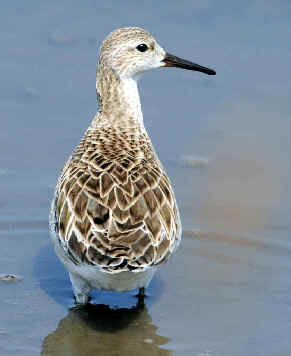
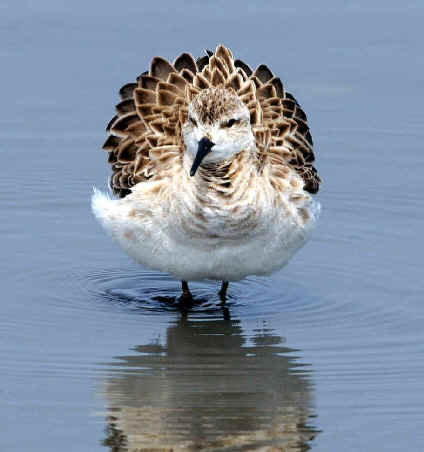
Above: Two photos of a Reeve, from the back & front
(both photos above by Howard Eskin)
Below: Ruffs displaying in breeding plumage.
During FONT tours in Poland in the spring, hundreds have been seen at leks.
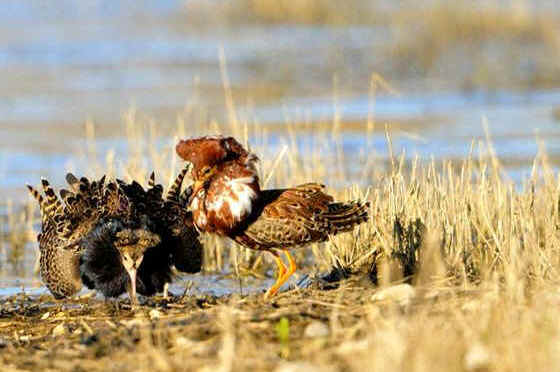
"Eurasian" Whimbrel
(*) ______ HU:may
IC:may,jun PO:apr(rare) SP:jul,oct SW:sep
Numenius p. phaeopus
Eurasian Curlew (Ed) (*) ______ BU:may
HU:may
IC:sep,oct PO:apr,may SP:jan,jul,oct,dec SW:sep TU:aug
Numenius a. arquata
Black-tailed Godwit (Ev) (*) (ph) ______ BU:may
HU:may
IC:may,jun,sep,oct PO:apr,may SP:jun,jul,oct,dec TU:aug
Limosa l. limosa (except IC)
Limosa limosa islandica (endemic breeder in IC)
Limosa limosa
was conspecific with what is now the Eastern Black-tailed Godwit
of eastern Asia, Limosa melanuroides.
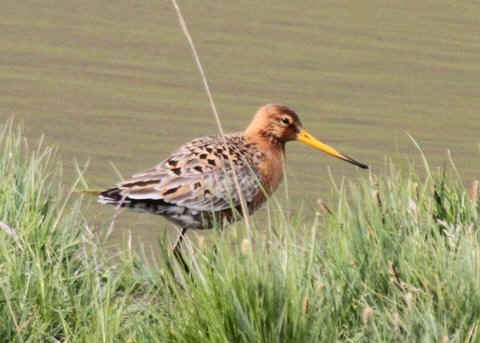
A Black-tailed Godwit photographed during the FONT Iceland Tour in June 2012
(photo by Gabi Hauser)
Bar-tailed Godwit (El) (*) (ph) ______
IC:sep,oct SP:oct,dec SW
Limosa l. lapponica
Buff-breasted Sandpiper (Vna)
(*) (ph) ______ IC:sep(rare)
Tryngites subruficollis
Long-billed Dowitcher (Vna) (*)
______ IC:sep(rare)
Limnodromus scolopaceus
(monotypic)
Eurasian Woodcock (Ev) (*) ______ BU:may
PO:apr,may RM:may
Scolopax rusticola (monotypic)
Great Snipe (nt) (Ev) (*) ______ PO:apr,may
Gallinago media (monotypic)
Common Snipe (*) (ph) ______ BU:may
HU
IC:may,jun,sep,oct PO:apr,may SP:jun,sep,oct,dec SW TU:aug
Gallinago g. gallinago (except
IC)
Gallinago gallinago faeroeensis (IC)
The Common Snipe was conspecific with the Wilson's Snipe
of North America, Gallinago delicata.
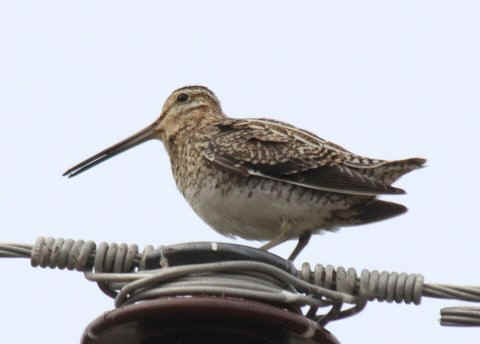
A Common Snipe photographed during the FONT Iceland Tour in June 2012
(photo by Gabi Hauser)
Jack Snipe (Ev) (*) ______ SW
Lymnocryptes minimus
(monotypic, and the single member of its genus)
Red-necked Phalarope (*) (ph) ______
BU:may IC:may,jun TU:aug
Phalaropus lobatus
(monotypic)
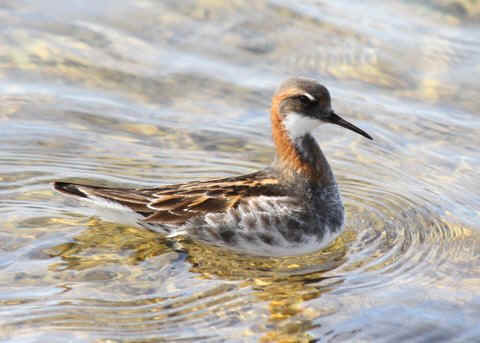
A Red-necked Phalarope photographed during the FONT Iceland Tour in June
2012
(photo by Gabi Hauser)
Grey Phalarope (*) (ph) ______ IC:jun(at
breeding site; uncommon breeder in IC)
Phalaropus fulicarius (monotypic)
Phalaropus fulicarius
is called Red Phalarope in North America. Likewise, in Iceland, the
local name translates to "Red Phalarope" as a small
number nest there in their red breeding plumage.
Cream-colored Courser (Ev) (*) ______
CI:jun,jul
Cursorius cursor bannermani
Collared Pratincole (Ee)
(*) ______
BU:may HU:may SP:apr,jun,jul
Glareola p. pratincola
Audouin's Gull (nt) (El) (*) ______ SP:jan,jun,jul,oct,dec
Larus audouinii (monotypic)
Slender-billed Gull (*) ______ BU:may
SP:jun,jul,oct,dec TU:aug
Chroicocephalus genei (formerly Larus) genei)
(monotypic)
Black-headed Gull (*) (ph) ______ BU:may
HU:may GR:jun IC:may,jun,sep,oct PG:sep PO:apr,may RM:may
SP:jan,apr,jun,jul,sep,oct,dec SW:sep TU:aug
Chroicocephalus ridibundus (formerly Larus ridibundus)
(monotypic)
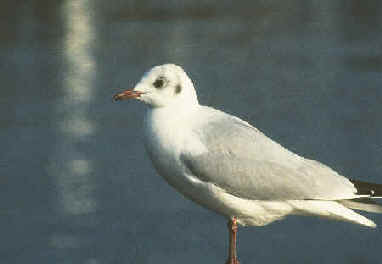
A Black-headed Gull in non-breeding plumage
(photo by Armas Hill)
Mediterranean Gull (*) ______ BU:may
GR:jun IC:sep(rare) SP:jun,oct TU:aug
Chroicocephalus melanocephalus (formerly Larus melanocephalus)
(monotypic)
Little Gull (Ed) (*) (ph) ______ BU:may
HU:may IC:sep PO:apr,may RM:may SP:oct TU:aug
Hydrocoloeus minutus (formerly Larus minutus)
(monotypic)
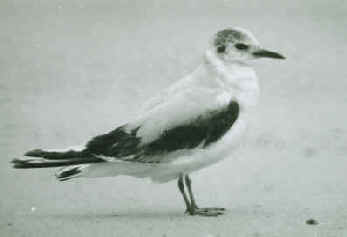
Little Gull
(photo by Alan Brady)
"European" Herring Gull (*)
______
IC:may,jun,sep,oct PO:apr,may SP:jun,oct SW:sep
Larus argentatus
By some, the "European" Herring Gull is said to be
distinct from the "American" Herring Gull of North America,
Larus argentatus
smithsonianus, and it is also said to be distinct from the Vega
Gull of eastern Asia, Larus vegae.
Yellow-legged Gull (*) (ph) ______
BU:may CI:jun,jul GR:jun HU:may RM:may SP:jan,apr,jun,jul,oct,dec SW:sep TU:aug
Larus cachinnans michahellis (CI, SP)
Larus c. cachinnans (BU, HU, RM, SW, TU) ("Caspian, or
Pontic Gull")
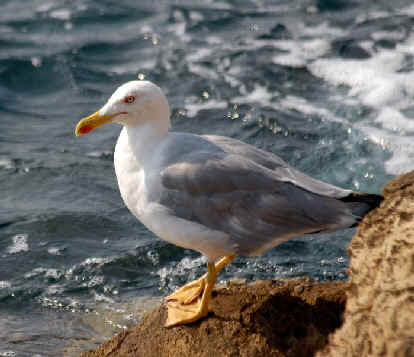
Yellow-legged Gull
(photo by Howard Eskin)
Lesser Black-backed Gull (*) (ph) ______ BU:may
HU IC:may,jun,sep PO:apr SP:jan,apr,jun,sep,oct,dec SW:sep
TU:aug
Larus f. fuscus ("Baltic Gull")
Larus fuscus graellsii
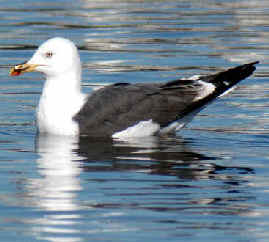
An adult Lesser Black-backed Gull
(photo by Howard Eskin)
Great Black-backed Gull (*) (ph) ______
IC:may,jun,sep,oct PO:may SP:oct,dec SW:sep
Larus marinus (monotypic)
Glaucous Gull (*) (ph) ______
IC:may,jun,sep,oct
Larus h. hyperboreus
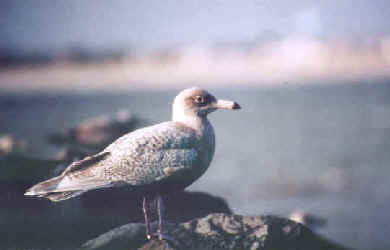
Glaucous Gull
Iceland Gull (*) (ph) ______ IC:may(rare),jun,sep,oct
Larus g. glaucoides
By some, Larus glaucoides glaucoides
is considered distinct from the subspecies of the Iceland Gull that
breeds in northern North America, the "Kumlien's Gull",
Larus glaucoides kumlini.
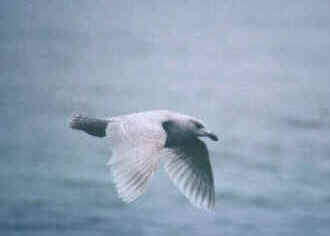
Iceland Gull
Common Gull (Ed) (*) ______ HU
IC:may,jun,sep,oct PO:apr,may RM SP SW;sep
Larus c. canus
Larus canus
is called Mew Gull in North America.
Ring-billed Gull (*)
______ IC:sep(rare)
Larus delawarensis
Sabine's Gull (*) (ph) ______ IC:sep(rare)
SW
Xema sabini (formerly Larus sabini)
(monotypic, and the single
member of its genus)
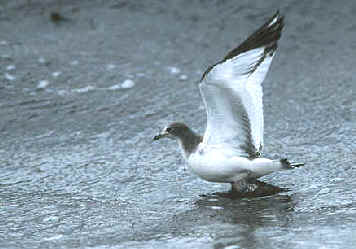
A juvenile Sabine's Gull
(photo by Jens Bruun)
Black-legged
Kittiwake (*) (ph) ______ IC:may,jun,sep,oct SW
Rissa tridactyla (now said to be monotypic)
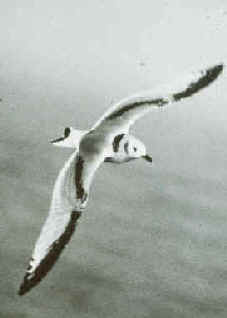
Above: a juvenile Black-legged Kittiwake, with its
striking wing pattern
Below: an adult Black-legged Kittiwake cliffside during
the FONT tour in Iceland in June 2012
(upper photo by Alan Brady; lower photo by Gabi Hauser)
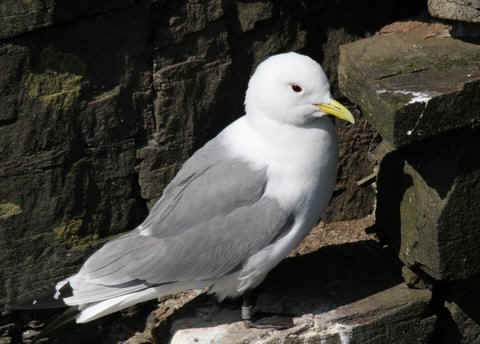
Gull-billed Tern (Ee) (*) (ph) ______ BU:may
SP:apr,jun,jul TU:aug
Gelochelidon n. nilotica (formerly Sterna n. nilotica)
Caspian Tern (Ee) (*) (ph) ______ BU:may
SP:jun,oct,dec TU:aug
Hydroprogne caspia (formerly Sterna caspia)
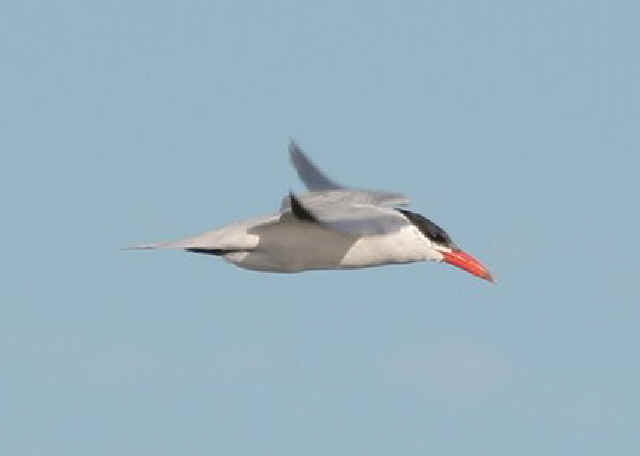
The Caspian Tern, the largest of the terns,
occurs, in separate populations, in both the Old & New
Worlds.
(photo by Abram Fleishman)
Lesser Crested Tern (Er) (*) ______ SP
Thalasseus bengalensis (formerly Sterna bengalensis)
Sandwich Tern (Ed) (*) (ph) ______ BU:may
SP:jan,jun,jul,oct,dec SW;sep TU:aug
Thalasseus s. sandvicensis (formerly Sterna s. sandvicensis)
Common Tern (*) ______ BU:may
HU:may PO:apr,may SP:jun,jul,oct SW TU:aug
Sterna h. hirundo
Arctic Tern (*) (ph) ______ IC:may,jun,sep(rare
in sep) SW
Sterna paradisaea
(monotypic)
Little Tern (Ed) (*) ______ BU:may
PO:may SP:jun,jul
Sternula a. albifron (formerly Sterna a. albifrons)
Black Tern (Ed) (*) (ph) ______ BU:may
HU:may
PO:apr,may RM:may SP:apr,jun,jul,oct
Childonias n. niger
White-winged Tern (*) (ph) ______
BU:may HU:may IC:jun(rare) PO:apr,may TU:aug
Childonias leucopterus (monotypic)
Childonias leucopteus
was at one time called White-winged Black Tern.
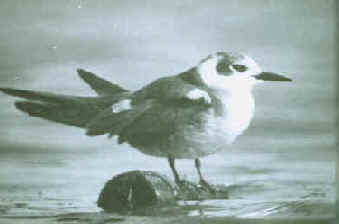
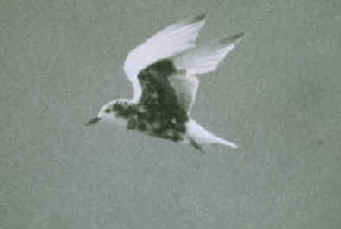
Two photos of the White-winged Tern
(both photos by Alan Brady)
Whiskered Tern (Ed) (*) (ph) ______ BU:may
HU:may
PO:apr,may RM:may
SP:apr,jun,jul TU:aug
Childonias h. hybrida
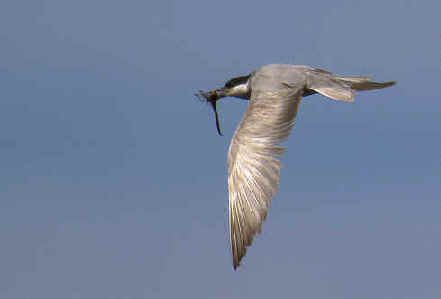
Whiskered Tern
(photo by Leroy Tabb)
Pomarine Skua (*) (ph) ______
IC:jun(rare) SW
Stercorarius pomarinus (monotypic)
Stercorarius pomarinus is
called Pomarine Jaeger in North America.
Arctic Skua (*) (ph) ______ BU:may
IC:may,jun
Stercorarius parasiticus (monotypic)
Stercorarius parasiticus is
called Parasitic Jaeger in North America.
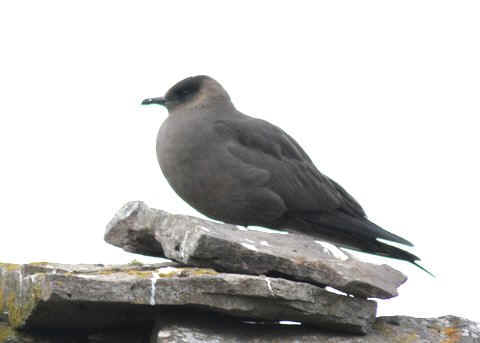
Above & below: the Arctic Skua, or Parasitic Jaeger
Above: a dark morph during the FONT tour in Iceland in June 2012
Below: an immature bird in Sweden in September
(upper photo by Gabi Hauser; lower photo by Jens Bruun)
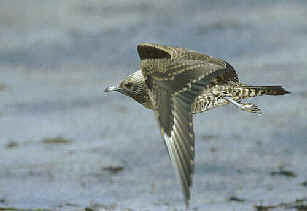
Great Skua (*) (ph) ______
IC:may,jun(many),sep(rare) SP:jan,dec
Stercorarius skua (formerly Catharacta skua)
(monotypic)
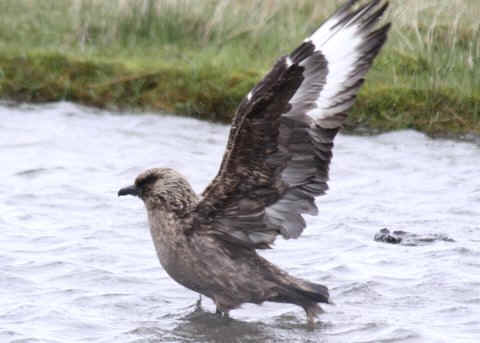
Above & below: Great Skuas where they breed Iceland
Both photographs during FONT tours
(upper photo by Gabi Hauser in June
21012; lower photo during an earlier tour by
Cheryl Pearce)
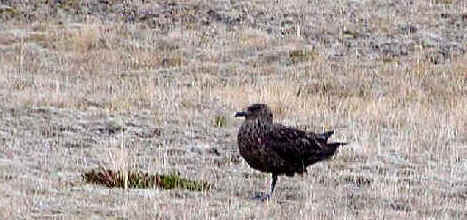
South Polar Skua (*) (ph) ______ CI:jul
Stercorarius maccormicki (formerly
Catharacta maccormicki) (monotypic)
Black Guillemot (Ed) (*) (ph) ______
IC:may,jun,sep,oct SW:sep
Cepphus g. grylle
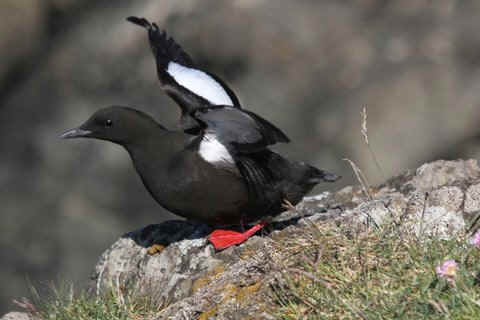
Above & below: Black Guillemots in breeding plumage photographed
during FONT tours in Iceland in May & June.
In the lower photo, the bird's eggs were among the rocks.
(upper photo by Gabi Hauser; lower photo by Cheryl Pearce)
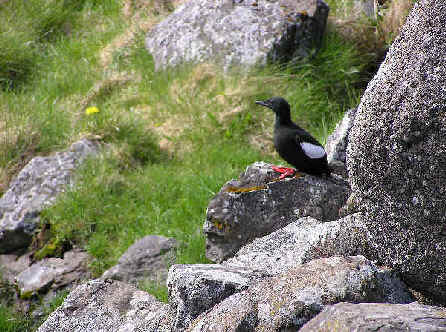
Below: a Black Guillemot in non-breeding plumage
photographed during the FONT Iceland Tour in September/October 2013
(photo by Alan Mitchnick)
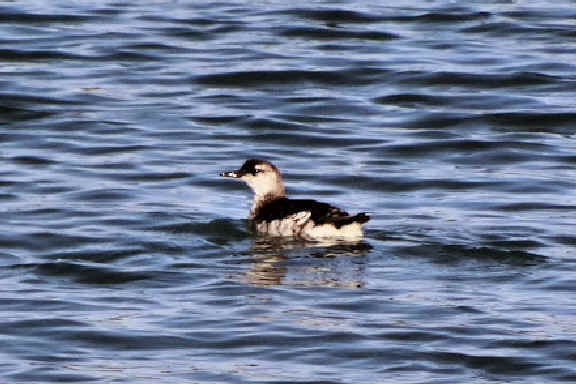
Guillemot (*) (ph) ______
IC:may,jun,sep,oct SW
Uria a. aalge
Uria aalge
is called Common Murre in North America.
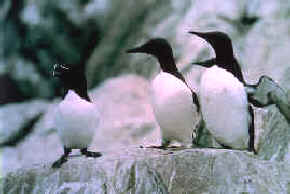
Above: Two Guillemots, or Common Murres
(right) and a Razorbill (left)
Below: The bridled form of the Guillemot (or Common Murre)
These birds in Iceland.
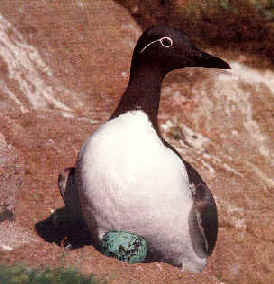
Brunnich's Guillemot (*) (ph) ______ IC:jun
Uria l. lomvia
Uria lomvia
is called Thick-billed Murre in North America.
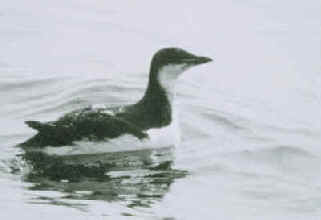
A Brunnich's Guillemot, or Thick-billed Murre
(photo by Alan Brady)
Razorbill (*) (ph) ______ IC:jun,oct
SP:jan
Uria torda islandica
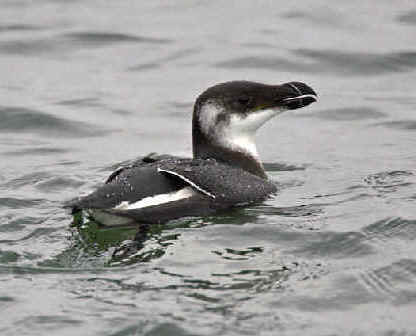
Above & below: Razorbill
This species has been seen during FONT tours in Iceland, as in the lower
photo during
our tour in June 2012.
Also it has been seen close to shore during a FONT Dec/Jan tour in southern
Spain.
(upper photo by Kim Steininger; lower photo by Gabi Hauser)
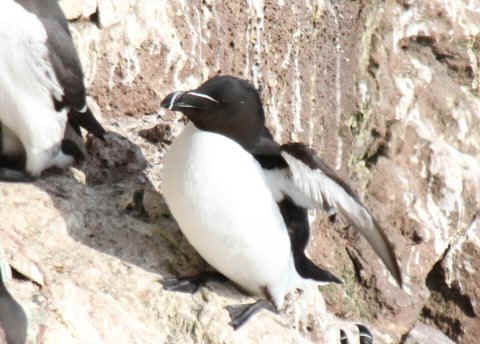
Little Auk ______
IC:oct
Alle alle
Alle alle is called Dovekie in
North America.
Atlantic Puffin (Ev) (*) (ph) ______ IC:may,jun,sep
Fratercula a. arctica
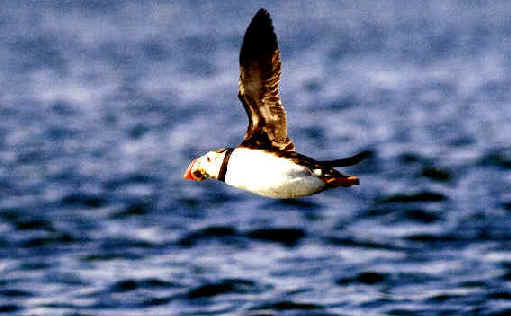
Above: an Atlantic Puffin in flight.
Below: Atlantic Puffins by their burrows,
photographed during the FONT tour in Iceland in June 2009
(lower photo by Gerin Hood)
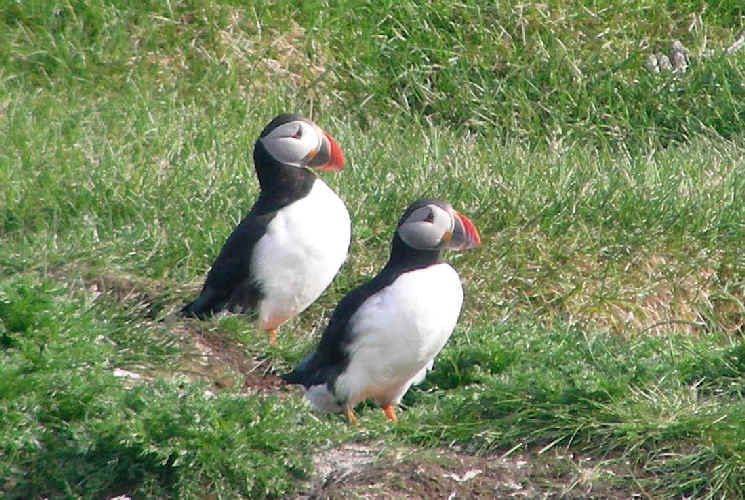
Excellent reference and guide books for the birds of Europe include:
"Complete Guide to the Birds of Europe", with text by Lars Svensson and Peter Grant,
illustrated by Killian Mullarney and Dan Zetterstrom,
1999. Harper Collins & Princeton Univ Press
"Birds of Europe with North Africa
& the Middle East",
by Lars Jonsson, 1993, Princeton Univ Press
Other related books:
"Raptors of the World", by James Ferguson-Lee & David Christie,
2001, Houghton Mifflin
"Icelandic Bird Guide", by Oli Johann, 2000, Prentsmidjan Oddi hf.
"Owls - A Guide to the Owls of the World", by C. Konig, Friedhelm
Weick, & Jan-Hendrik Becking, 1999, Yale University Press
"Owls of Europe", by Heimo Mikkola, 1983, T & A D Poyser
"Guia de las Aves de las Islas Canarias", by Jose Manuel Moreno, 1988,
Editorial Interinsular Canaria, S.A.
"La Guia de Incafo de las Aves de la Peninsula Iberica", by Ramon
Saez-Royuela, 1980, Incafo.
"Woodpeckers - An Identification Guide to the Woodpeckers of the
World", by Hans Winkler, David Christie, & David Nurney, 1995, Houghton
Mifflin
To
top of page


 Birds
of EUROPE
Birds
of EUROPE

















































































































